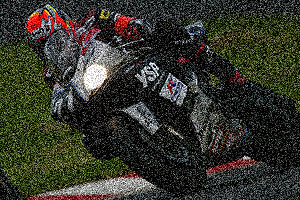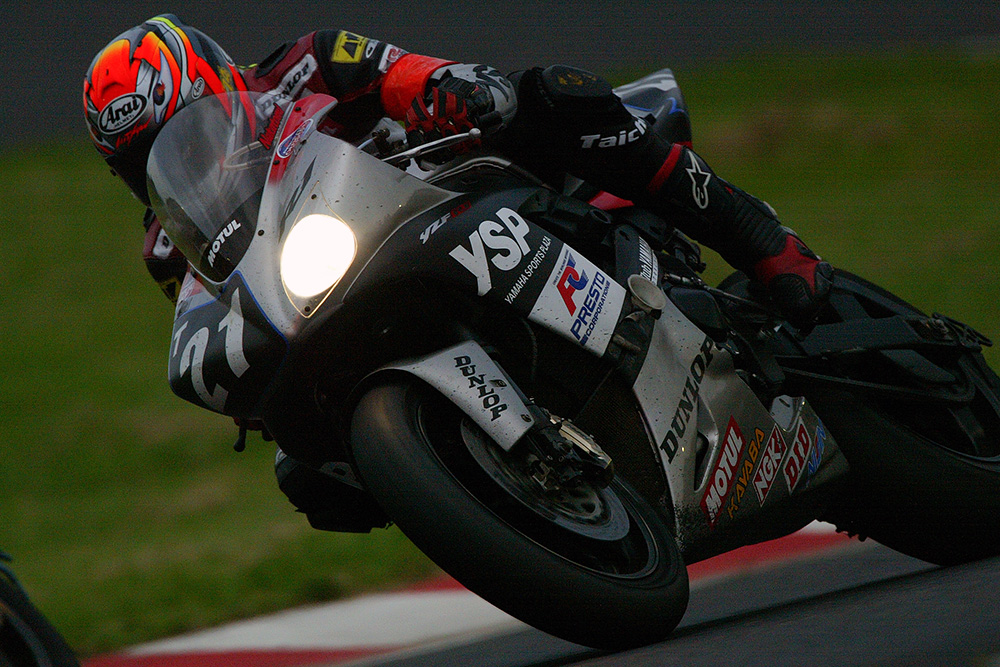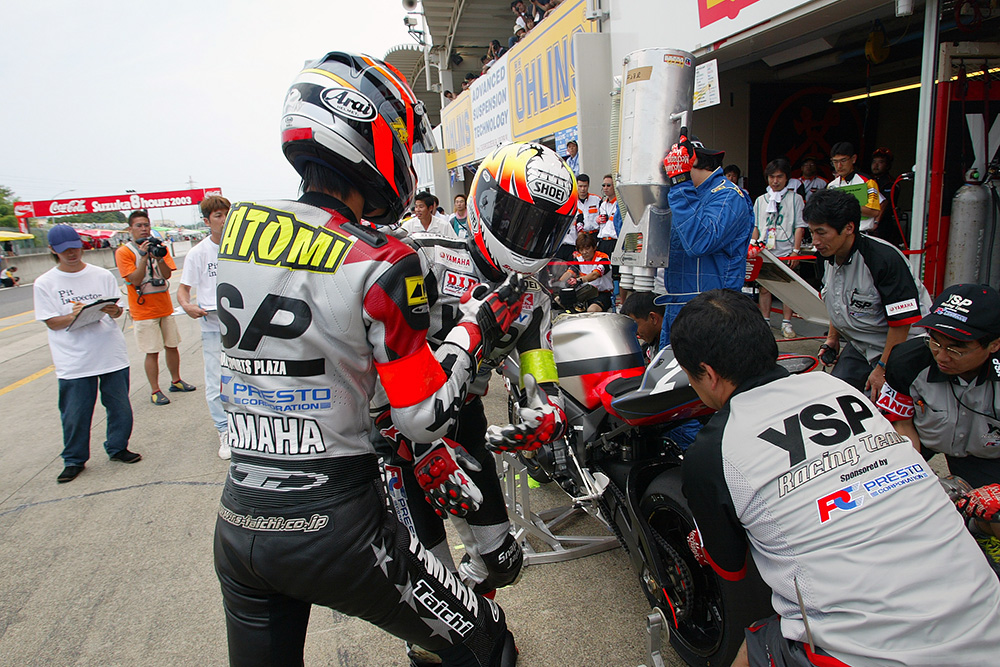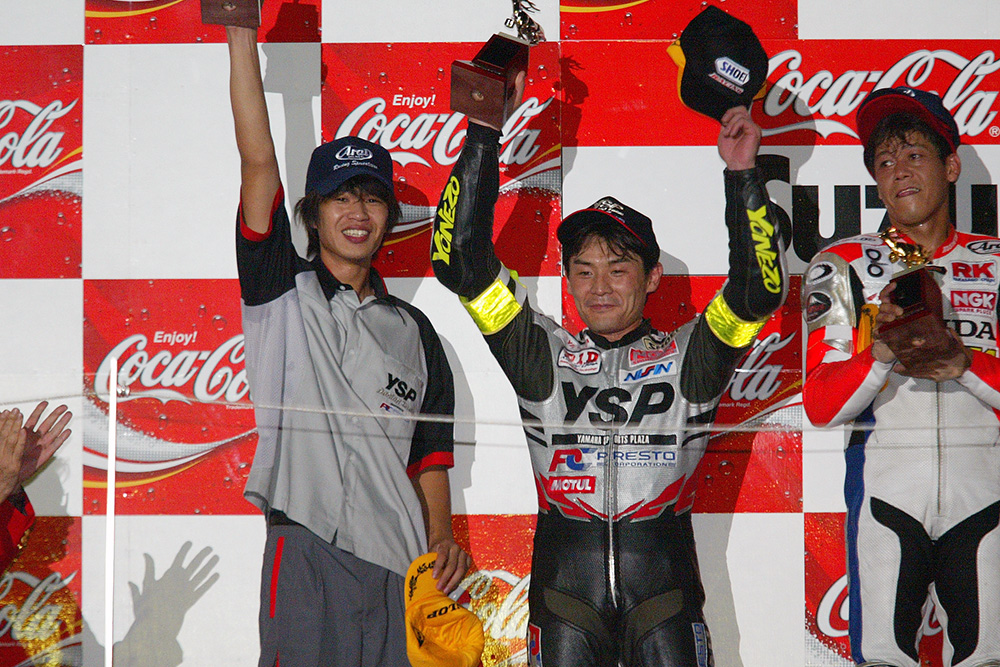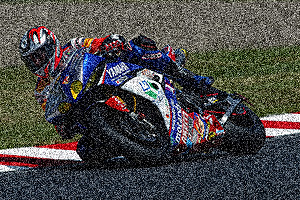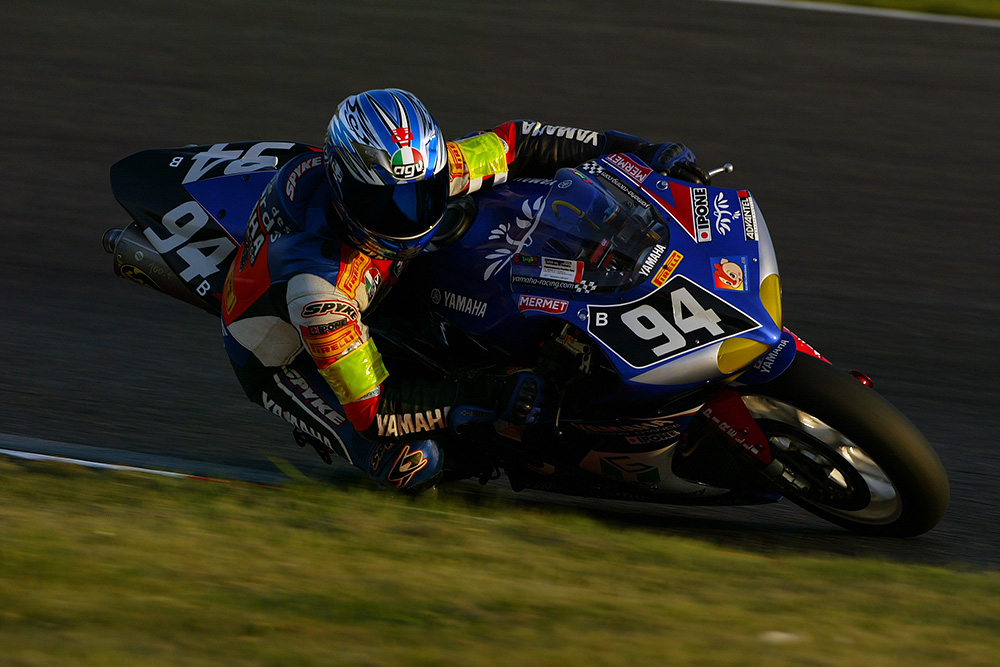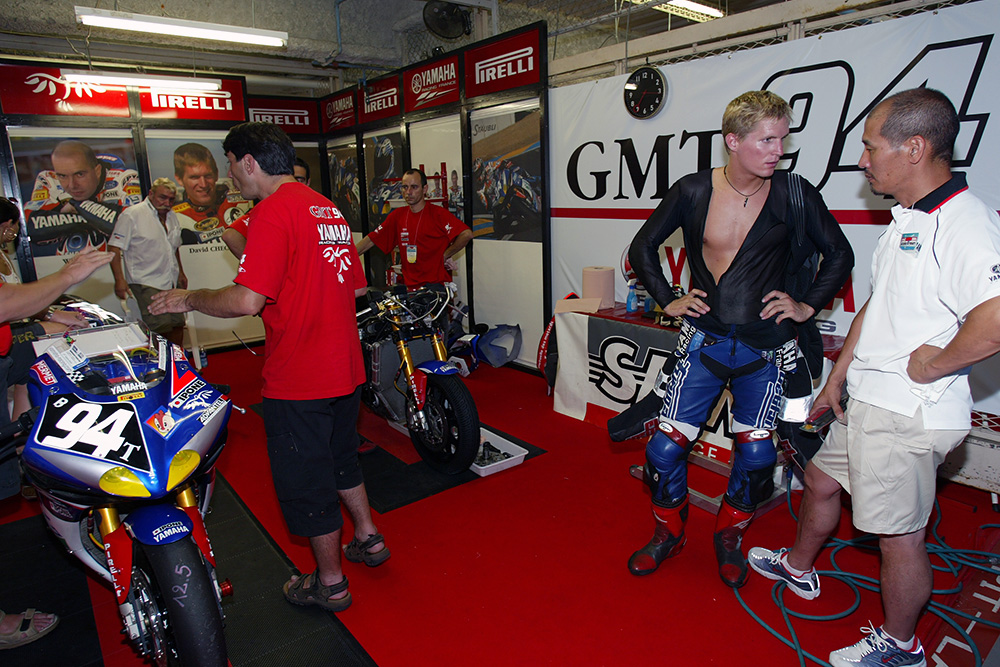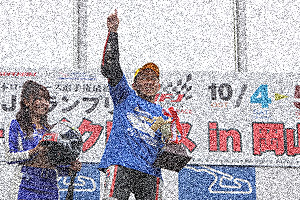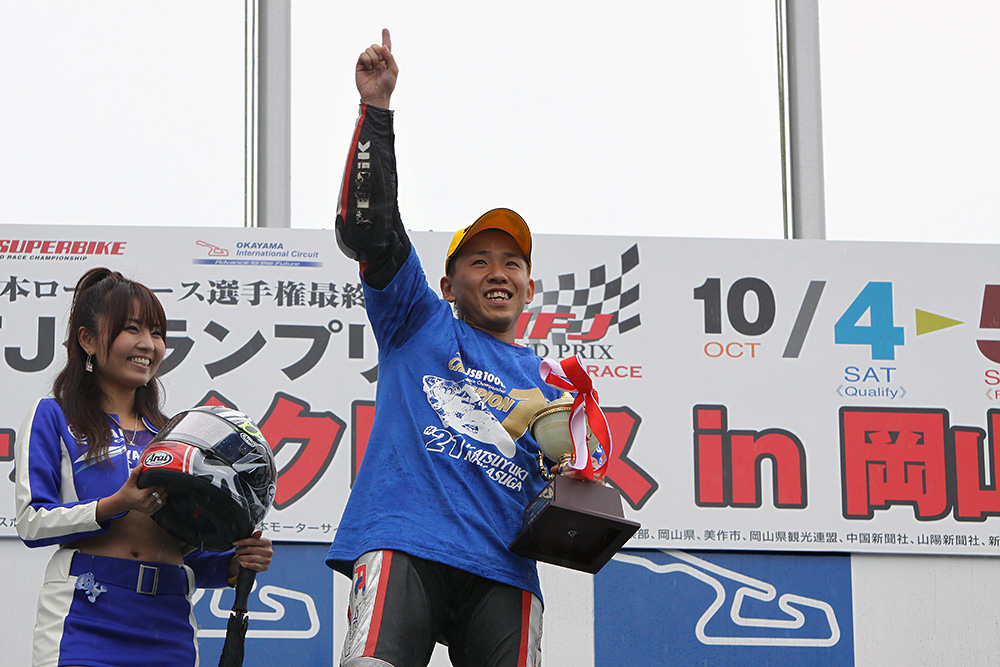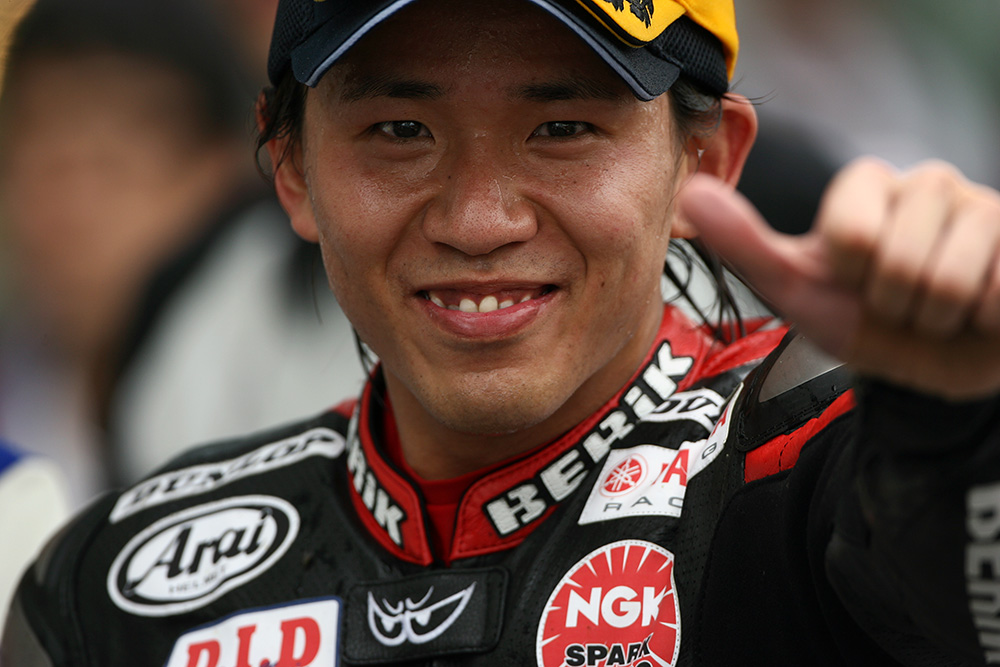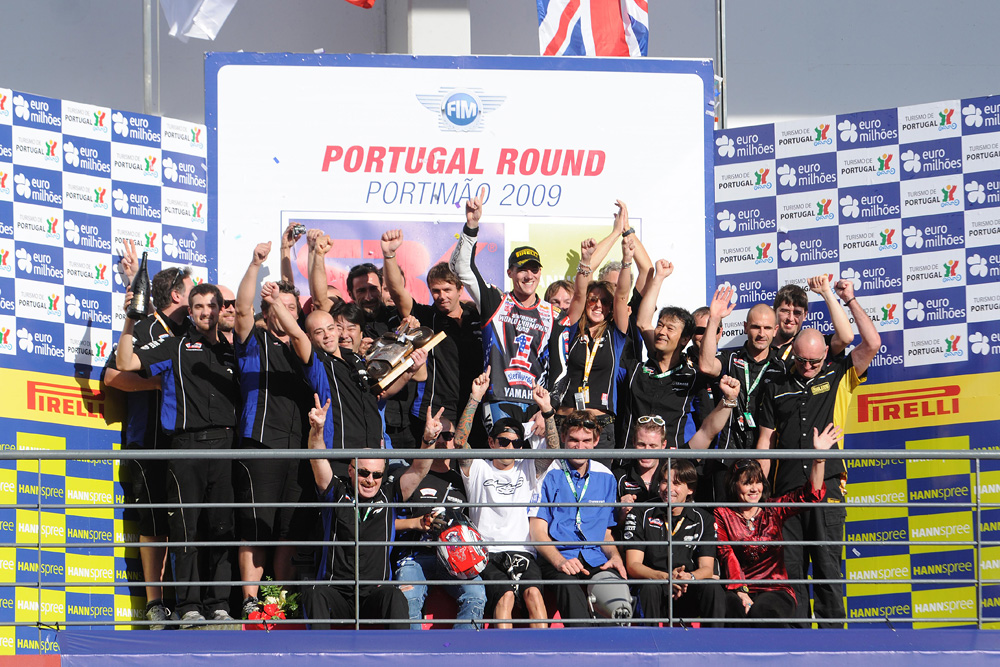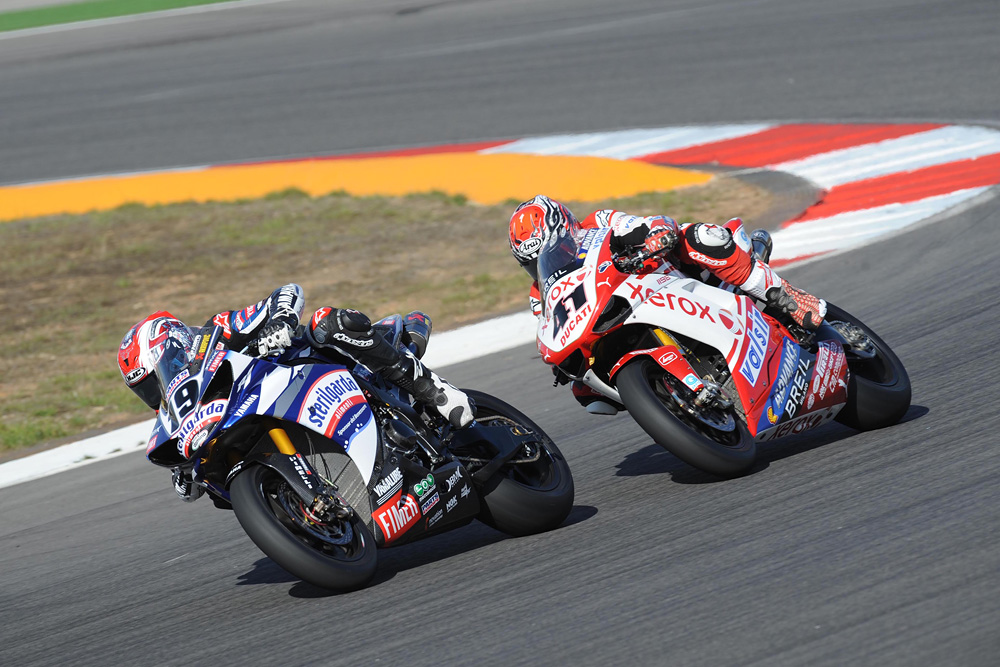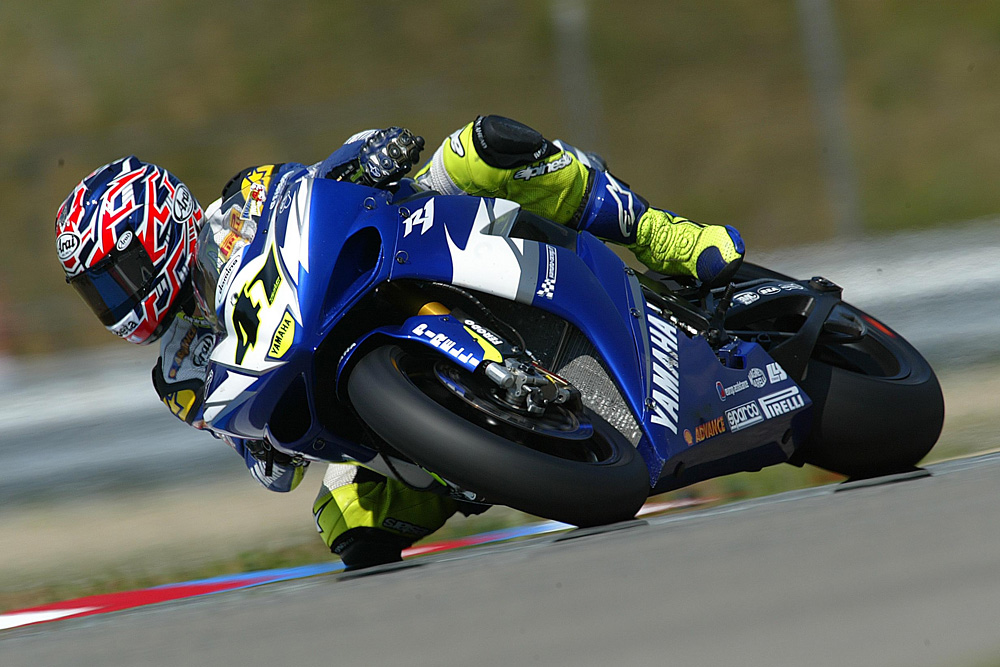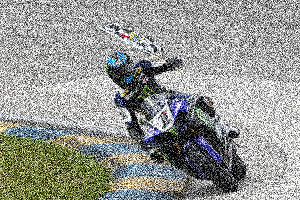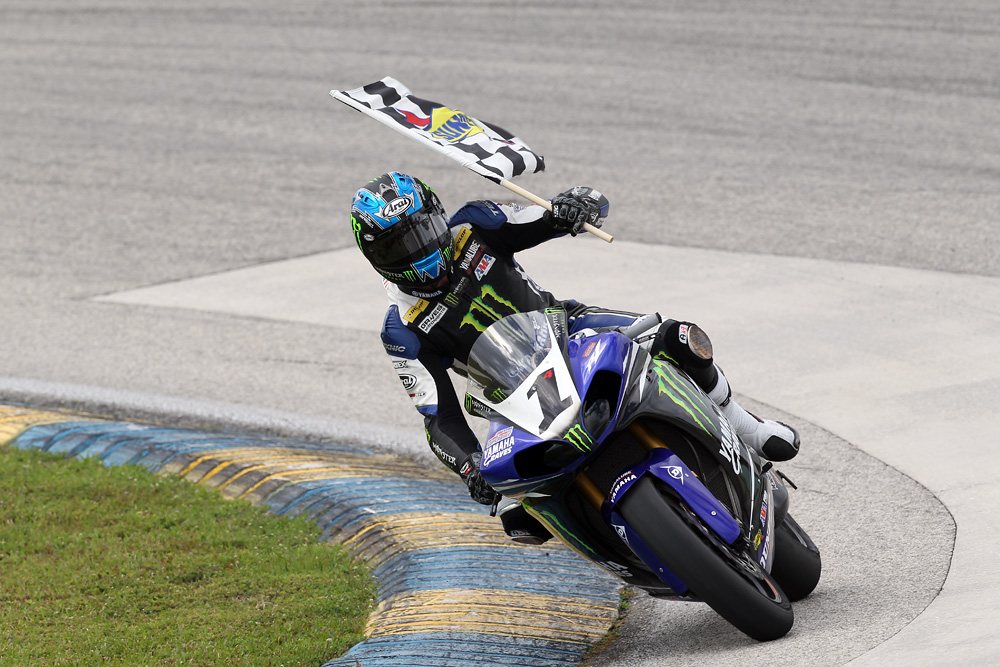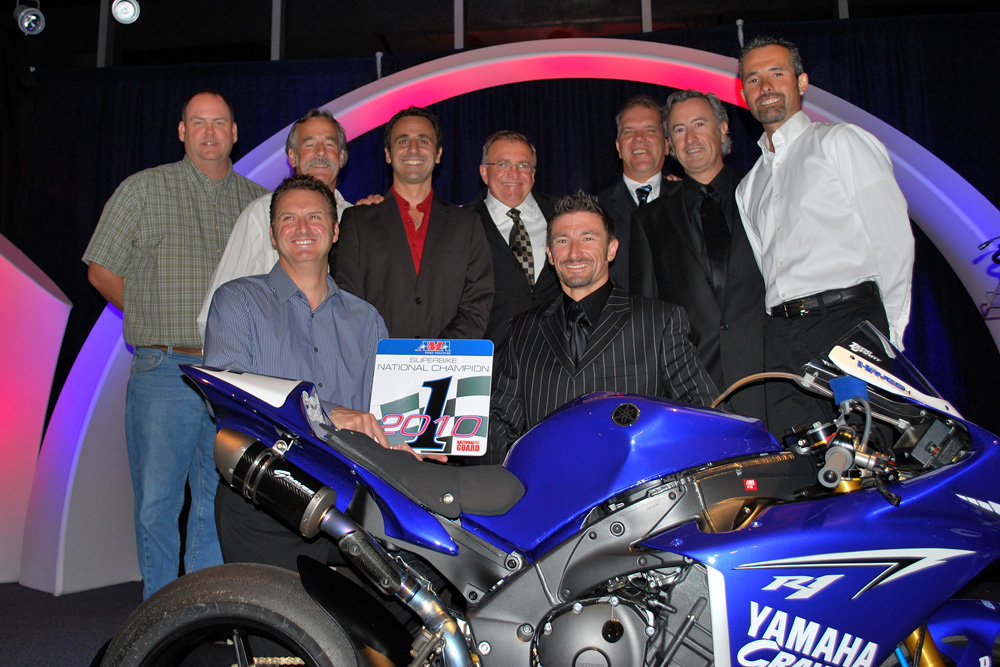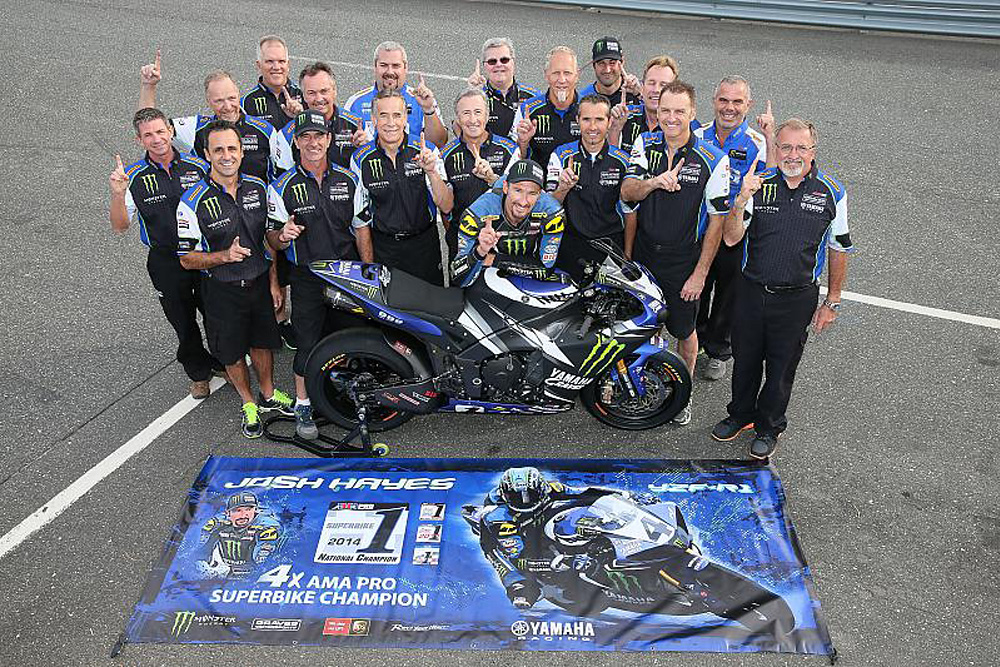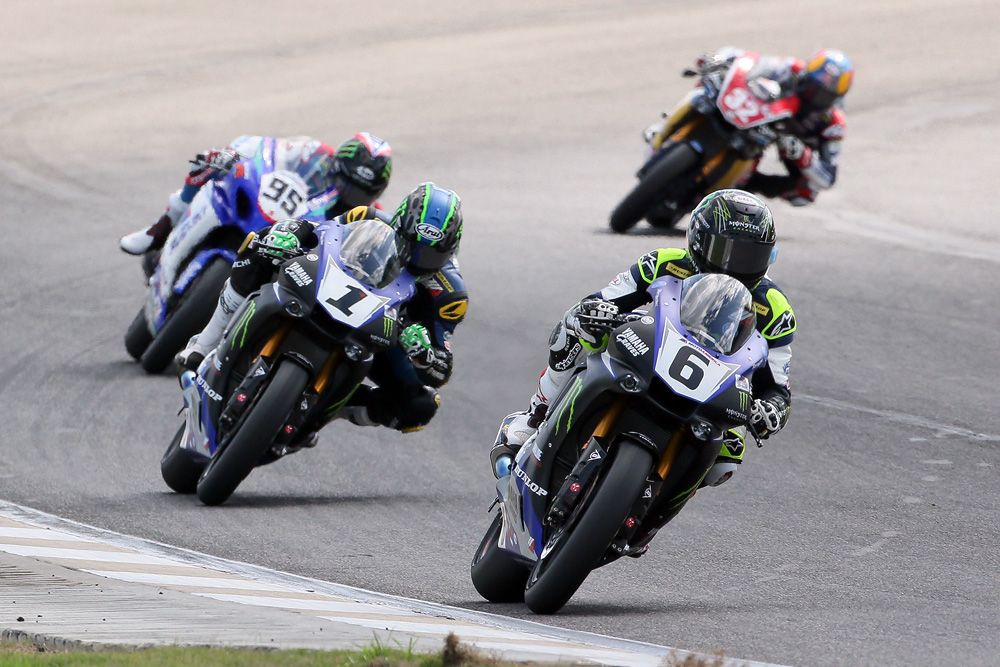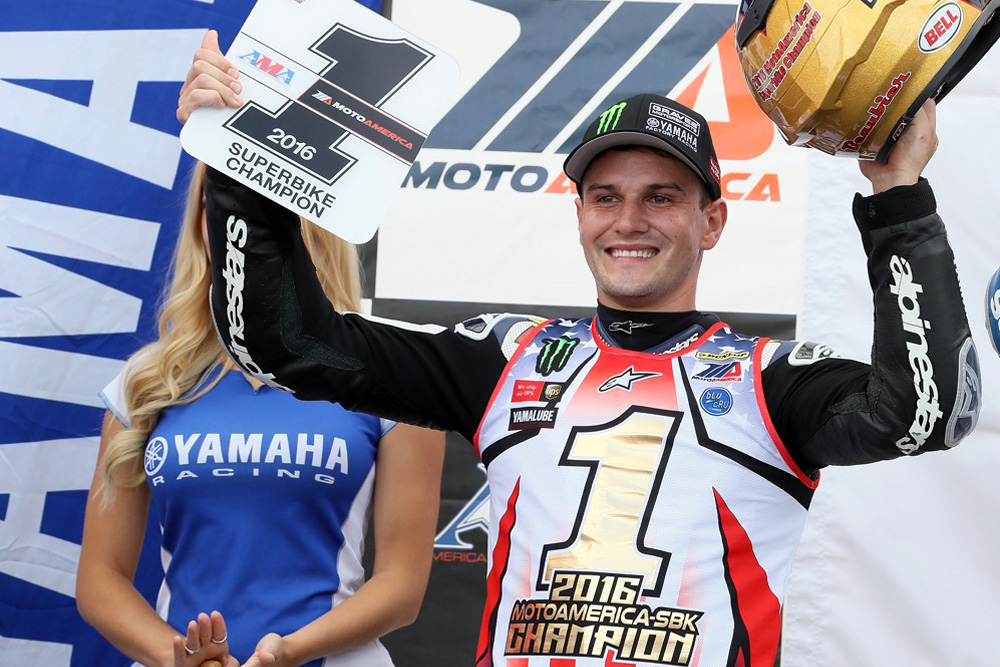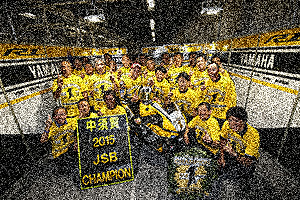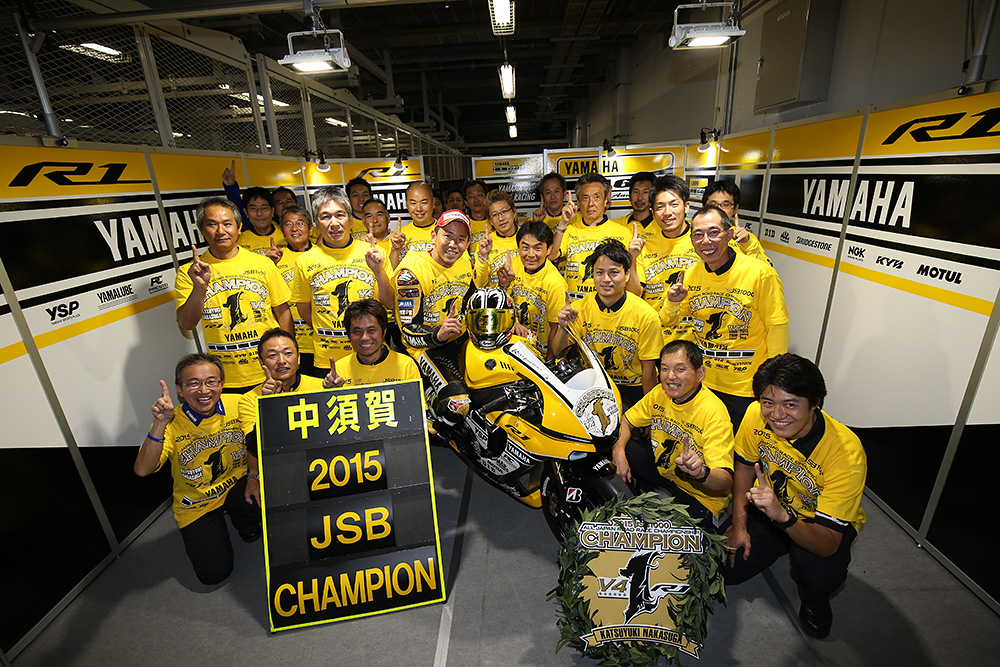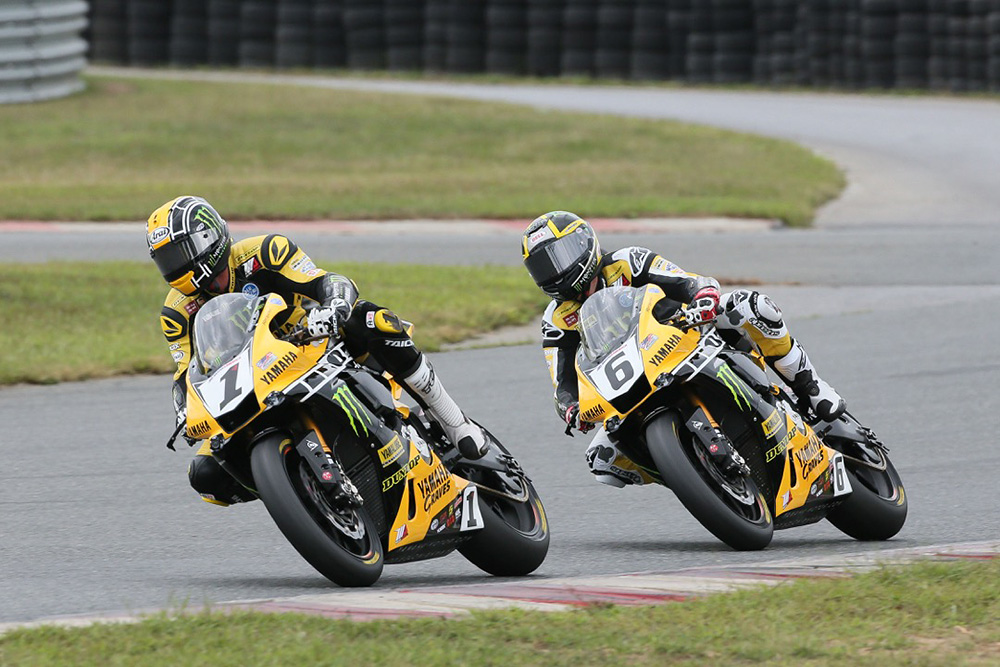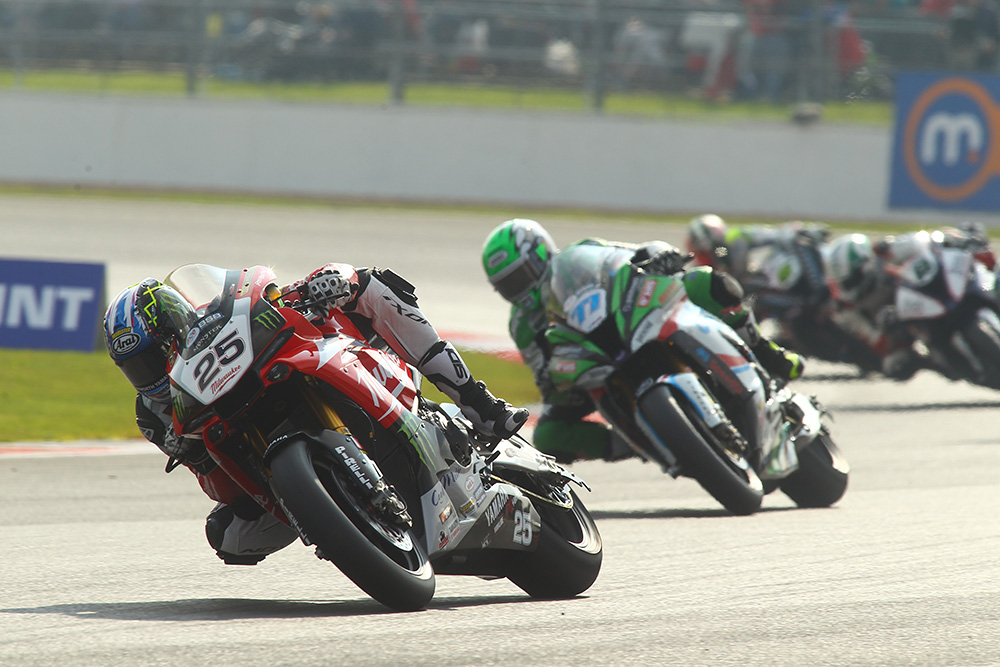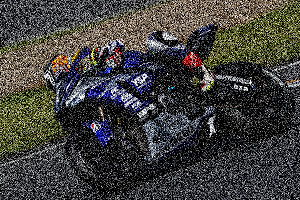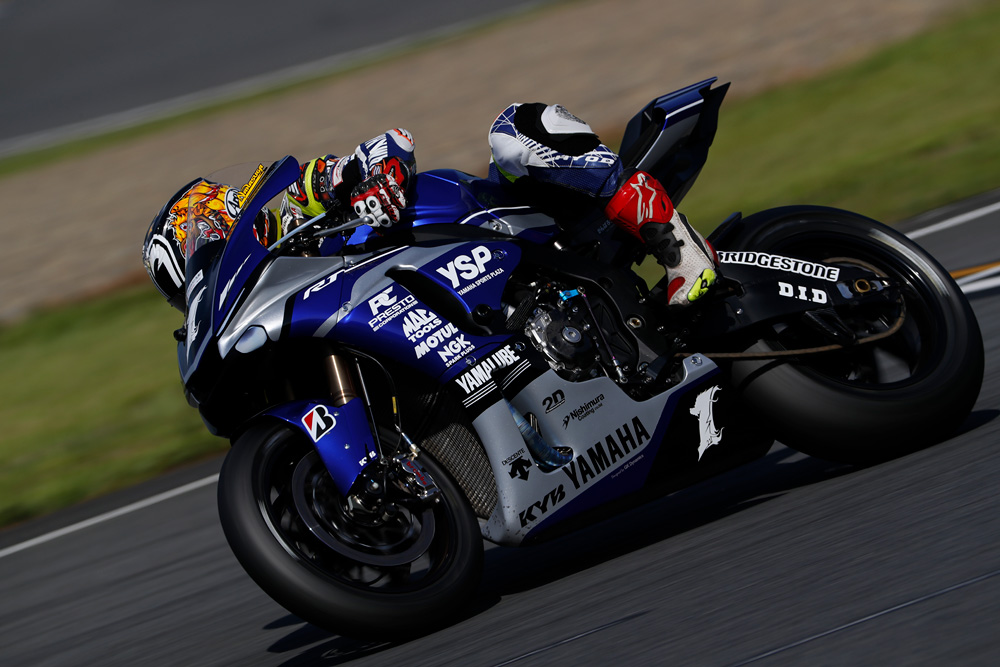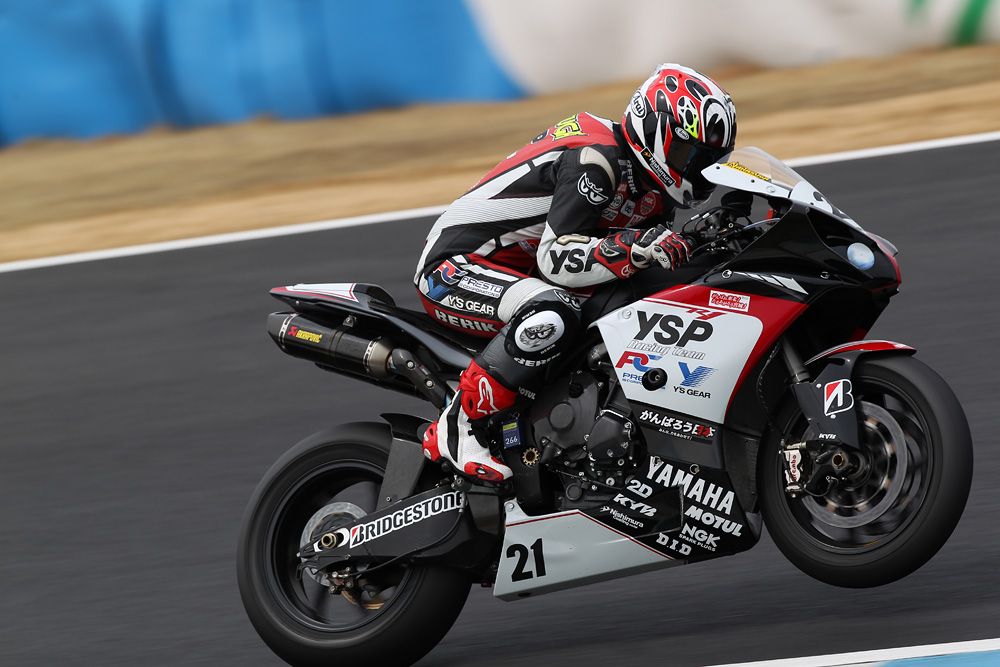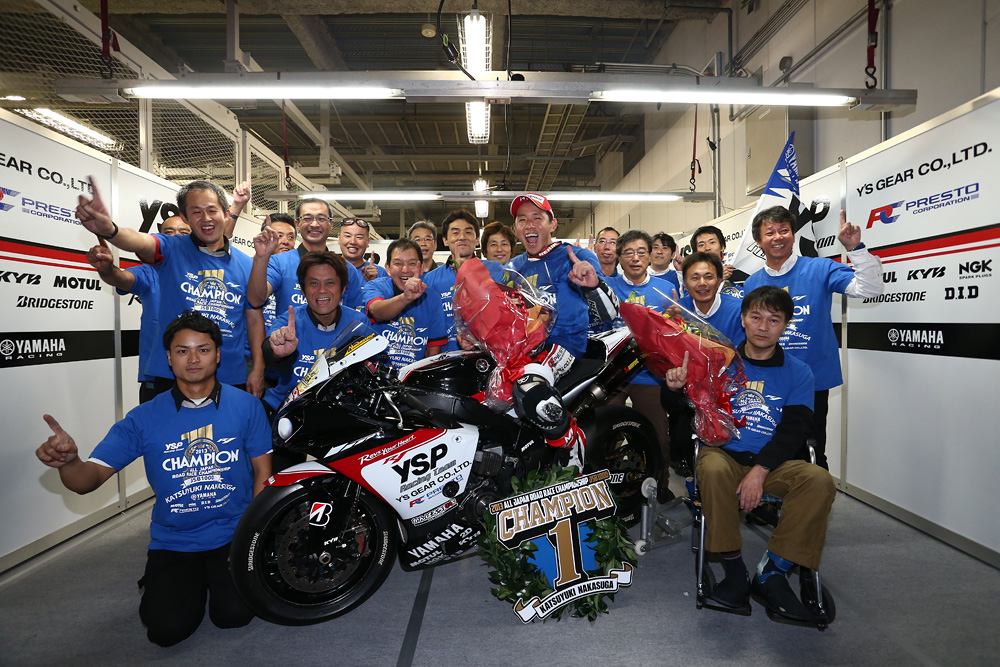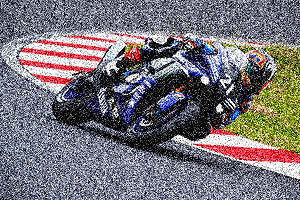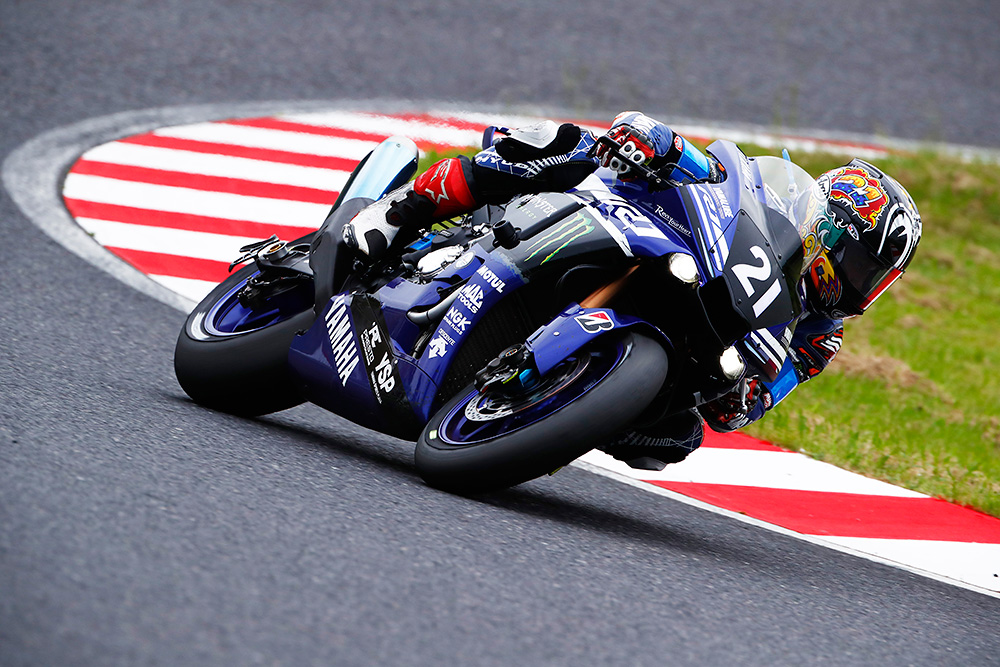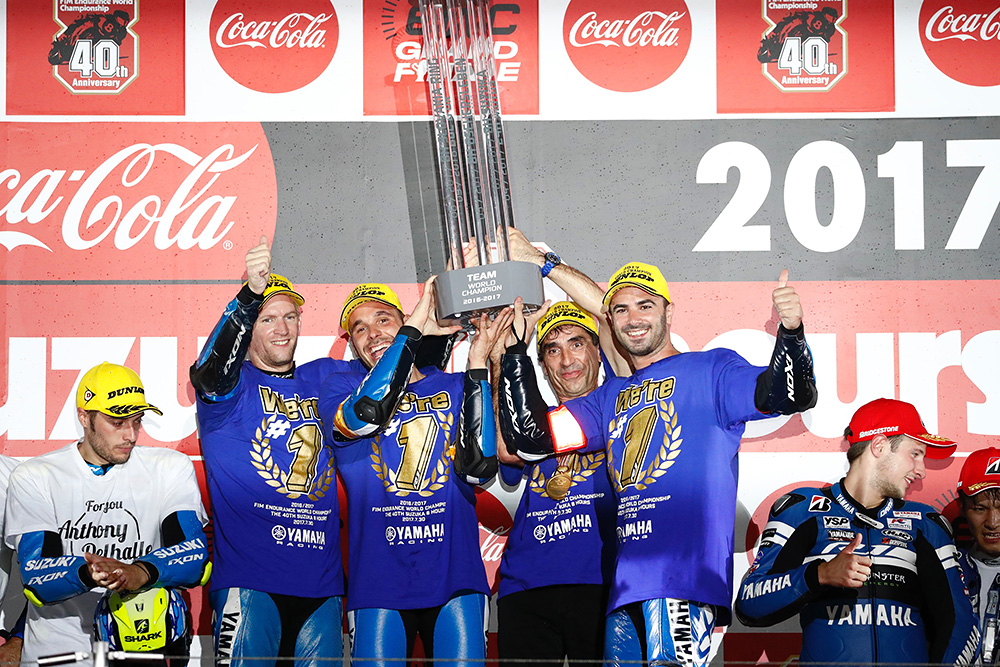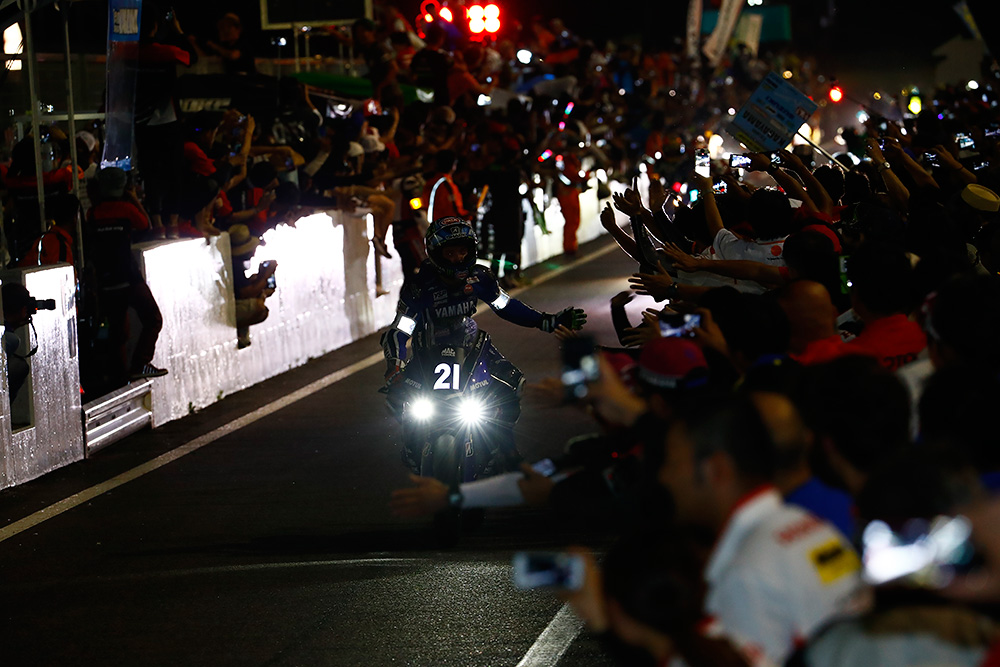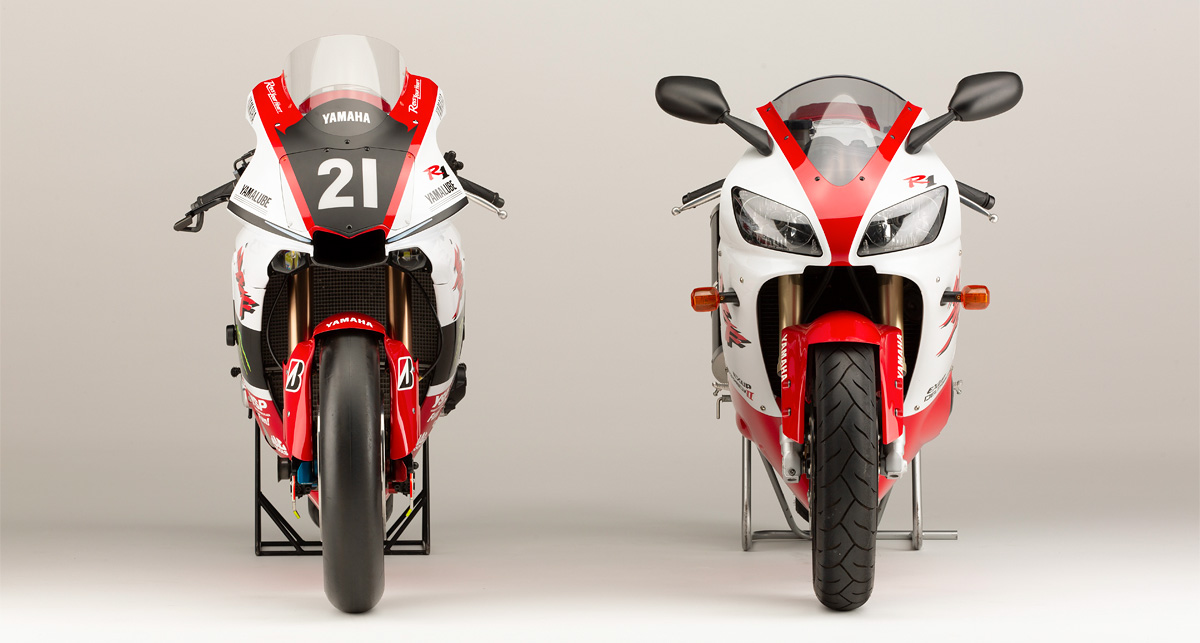
In 1998 the YZF-R1 revolutionised the supersport world. Over its 20-year evolution, this breakthrough machine went from being the “Fastest on Twisty Roads” to the “Fastest on the Racetrack”, not only delivering speed and power but also staying a step ahead of the times. The YZF-R1 demonstrated its prowess and potential by winning races around the world. Here, we look back on two decades of the R1 through summaries of each model iteration, the R1’s numerous accolades in several racing series and some stories from its long racing history.
1998
1st-Generation: Creating a New Category
Development of the first YZF-R1 called for creating a next-generation supersport machine, and it packaged a compact, 998cc, liquid-cooled, 20-valve, DOHC 4-cylinder engine pumping out a massive 150 PS into an ultralight chassis that was on par with 600cc machines with a dry weight of only 177 kg. The R1’s GP-inspired chassis ran a long swingarm and redefined the category with its incredible power-to-weight ratio of 1.18 kg/PS.
Max. power: 150 PS/10,000 rpm Vehicle weight: 177 kg (dry)
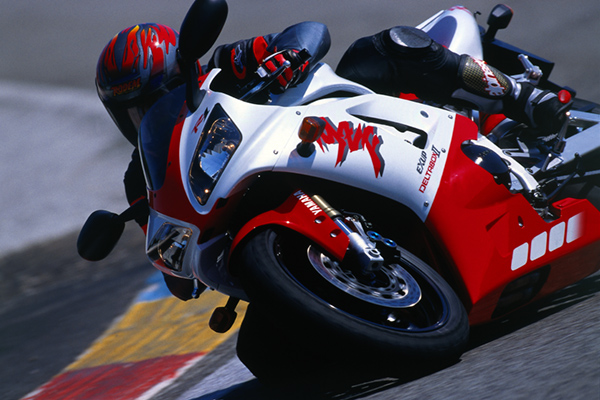
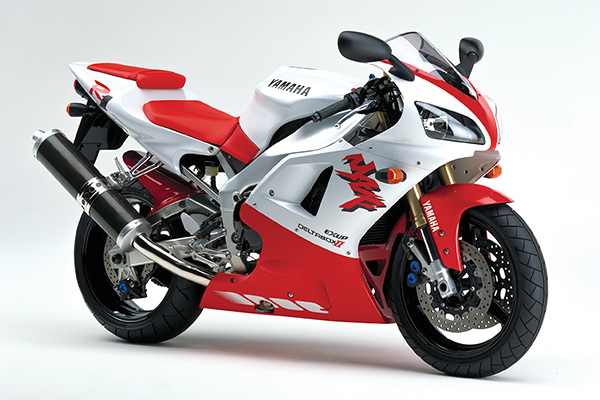
2000
2nd-Generation: Refinements with New Materials
The ground-up review for the 2nd-generation R1 included 250 parts changed for engine and chassis. The all-new bodywork yielded improved aerodynamic performance, the titanium muffler reduced weight, and its performance potential refined with improved drivability and more. This model update took the R1’s “Fastest on Twisty Roads” concept to the next level.
Max. power: 150 PS/10,000 rpm Vehicle weight: 175 kg (dry)
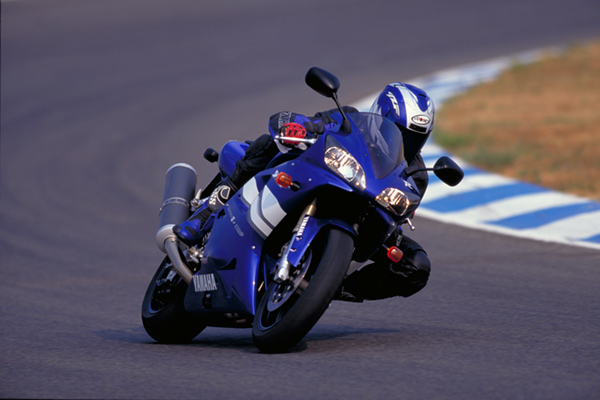
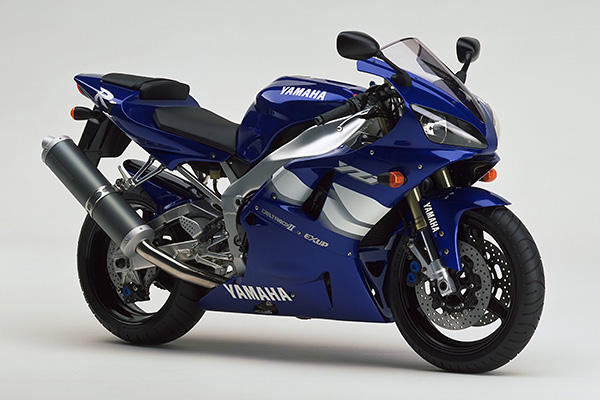
2002
3rd-Generation: Fuel Injection and Other Enhancements
This was the first mass-production motorcycle to feature free-piston fuel injection. The movement of the free pistons allowed ideal control of intake air volume even at low speeds, delivering linear throttle response with the smooth feel of carburettors while electronic control ensured superior response and reliability. The new Deltabox III frame brought some 30% more torsional rigidity while new technologies, weight reductions, optimising the bike’s dimensions and more further improved cornering performance.
Max. power: 152 PS/10,500 rpm Vehicle weight: 174 kg (dry)
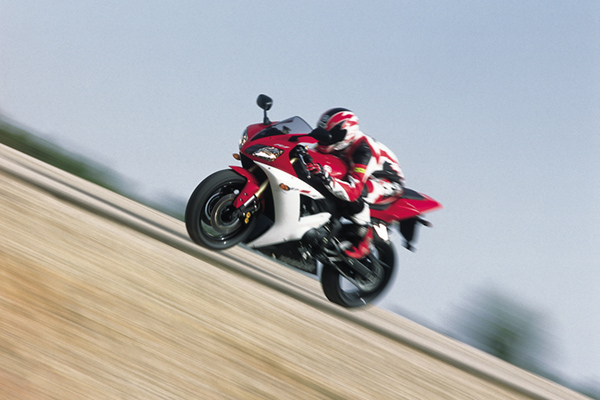
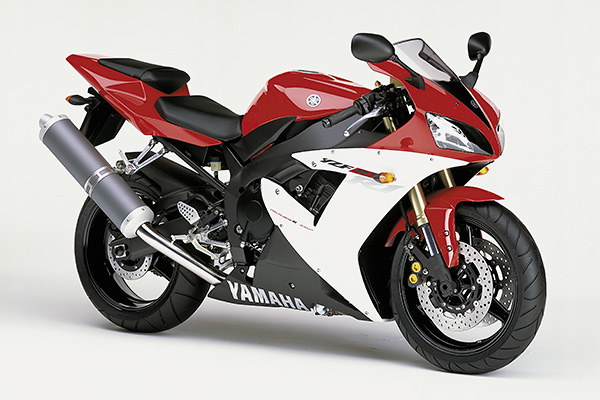
2003
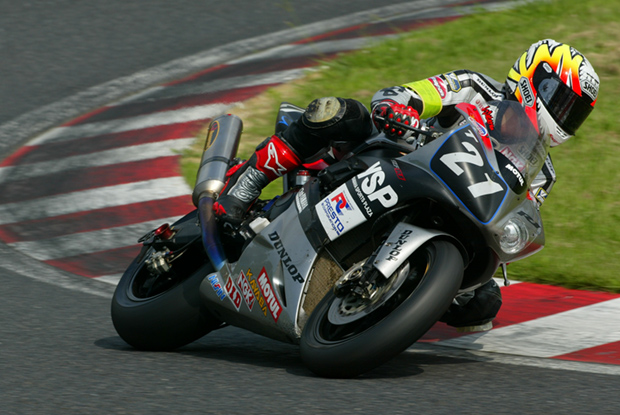
Category/Ranking/Result
| WSBK | Alessandro Gramigni: 19th |
|---|---|
| EWC | Yamaha GMT94: 3rd | Endurance Moto 38: 6th | Yamaha Austria R.T.: 7th |
| Suzuka 8H | YSP Racing Team sponsored by PRESTO Corporation: 2nd overall, JSB1000 class winner | CleverWolf Racing Team: 6th |
| JSB1000 | Shinichi Nakatomi: 6th | Nobuyuki Osaki: 10th |
2004
4th-Generation: A Stunning New Design
Underseat exhaust pipes and other avant-garde design changes were made for the 2004 R1 to fulfil Yamaha’s motorcycle development ideal at the time of “exciting performance and stylish design”. It featured a bigger bore and shorter stroke spec, and a closed-deck cylinder design to help achieve its higher 12.4:1 compression ratio. To cope with the higher power, this R1 model was the first Yamaha motorcycle to use fracture-split (FS) connecting rods and the fuel-injection system featured sub-throttle valves. An all-new, high-rigidity Deltabox V (Victory) frame was engineered with design feedback from the YZR-M1 MotoGP machine and 3D CAD analysis technology.
Max. power: 172 PS/12,500 rpm Vehicle weight: 172 kg (dry)
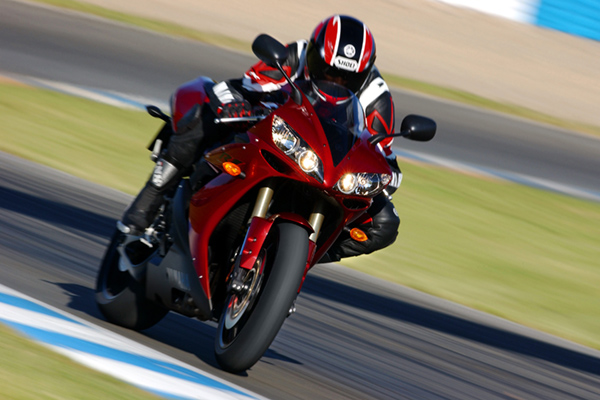
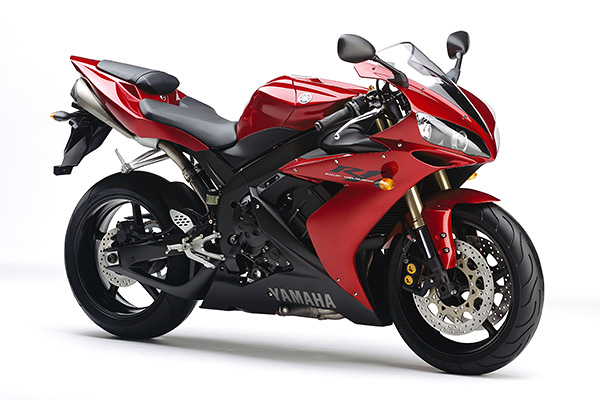
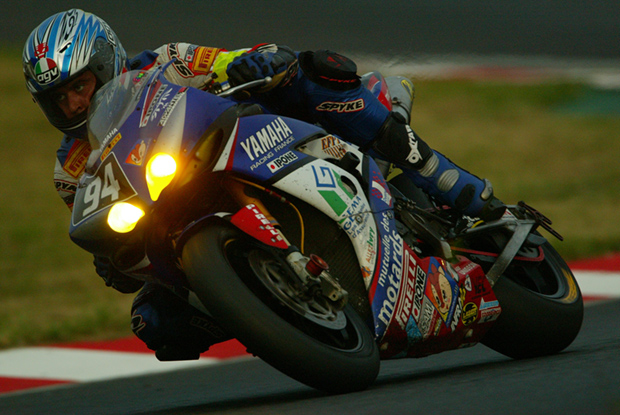
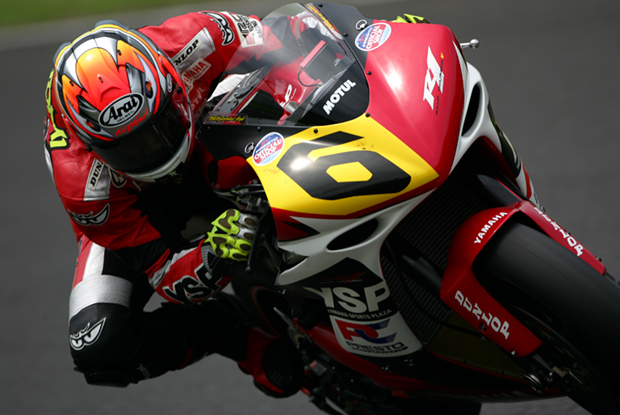
Category/Ranking/Result
| WSBK | Sébastien Gimbert: 18th | James Ellison: 19th |
|---|---|
| EWC | Yamaha GMT94: Champion | Endurance Moto 38: 3rd | Yamaha Austria Racing Team 7: 4th |
| Suzuka 8H | Yamaha GMT94: 8th | Yamaha Austria Racing Team 7: 13th | YSP Racing Team sponsored by PRESTO Corporation: 14th Club YAMAHA MOTORCYCLE RACING: 17th |
| JSB1000 | Shinichi Nakatomi: 3rd |
2005
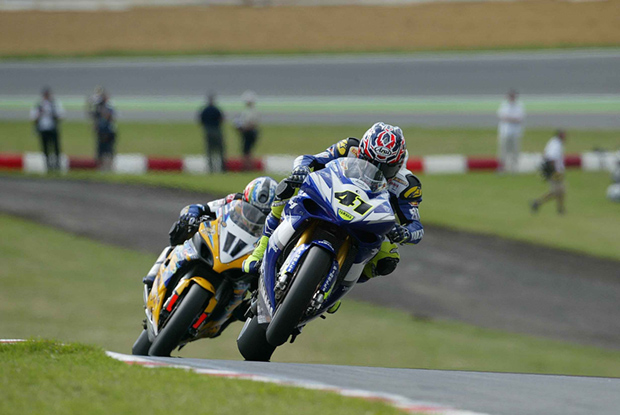
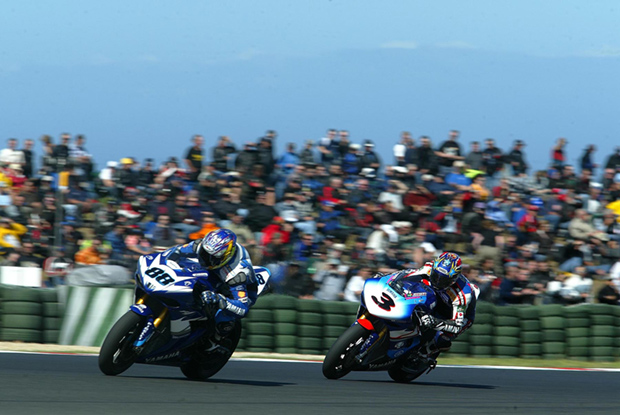
Category/Ranking/Result
| WSBK | Noriyuki Haga: 3rd | Andrew Pitt: 8th | Norifumi Abe: 13th | Sébastien Gimbert: 16th |
|---|---|
| EWC | Yamaha Austria Racing Team 7: 3rd | Phase One Endurance: 4th | Shell Endurance Academy: 6th | Yamaha Folch Endurance: 10th |
| Suzuka 8H | YSP Racing Team sponsored by PRESTO Corporation: 12th | Ito Racing・GMD Suzuka: 13th | Phase One Endurance: 18th |
| JSB1000 | Shinichi Nakatomi: 4th | Katsuyuki Nakasuga: 12th |
2006
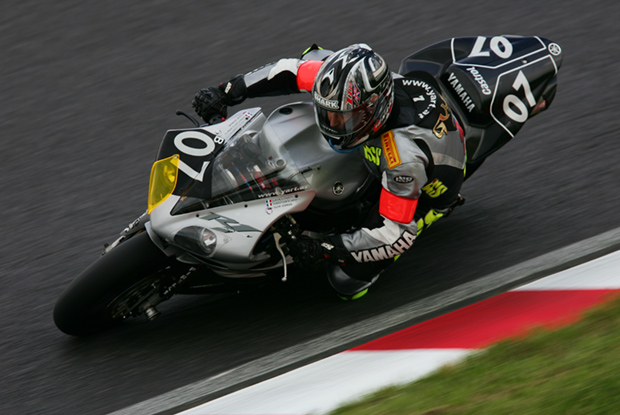
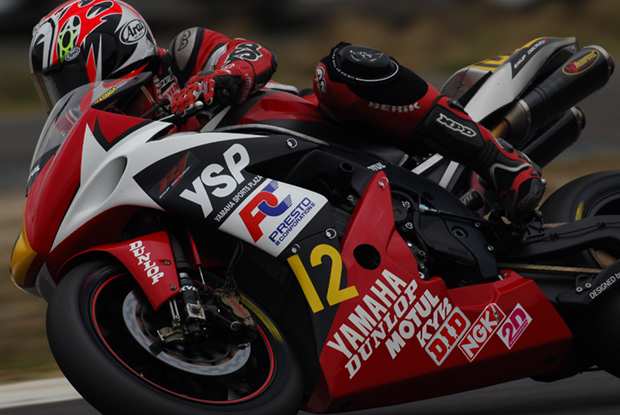
Category/Ranking/Result
| WSBK | Noriyuki Haga: 3rd | Andrew Pitt: 5th | Norifumi Abe: 13th | Shinichi Nakatomi: 17th | Sébastien Gimbert: 19th |
|---|---|
| EWC | Yamaha Austria Racing Team 7: 2nd | Phase One Endurance: 3rd | Shell Endurance Academy: 9th | Yamaha GMT 94: 13th |
| Suzuka 8H | Yamaha Austria Racing Team 7: 10th | TEAM ChaLLENGER: 14th | Phase One Endurance: 17th |
| JSB1000 | Katsuyuki Nakasuga: 9th |
2007
5th-Generation: Featuring YCC-T and YCC-I
With a new 4-valve design and a higher 12.7:1 compression ratio, the R1 gained an all-new aluminium Deltabox frame and more linear power delivery with its YCC-T ride-by-wire throttle system and electronically controlled variable air intake funnels (YCC-I), the first for a mass-production motorcycle. Its exterior design was also new, with an aggressive layered cowling for edgy and dynamic styling. This model brought improvements across the board, retaining the 1st-generation’s impeccable handling and performance on twisty roads while dramatically enhancing the bike’s performance on the track.
Max. power: 180 PS/12,500 rpm Vehicle weight: 177 kg (dry)
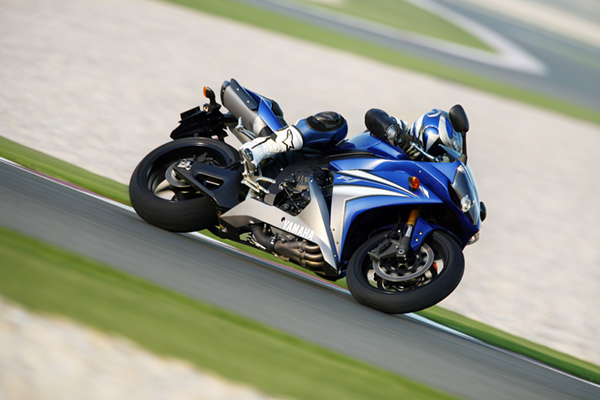
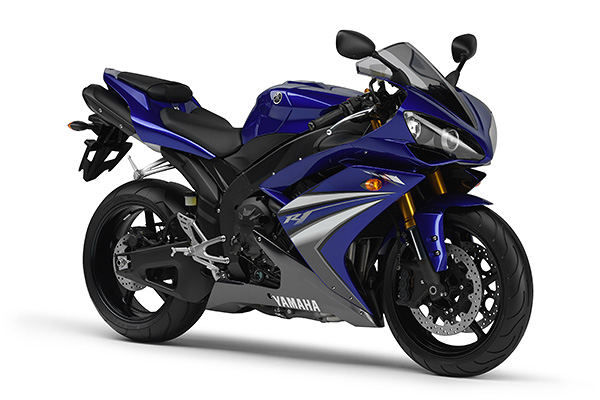
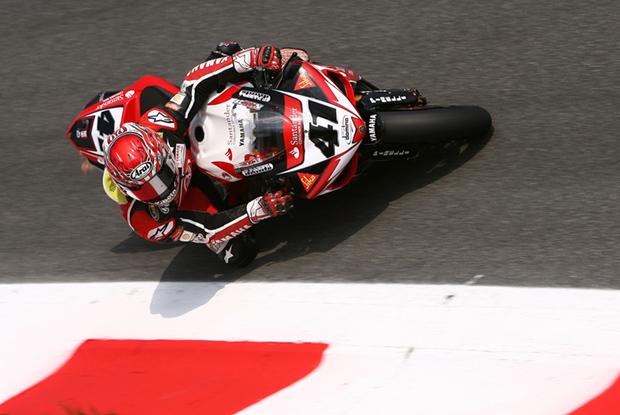
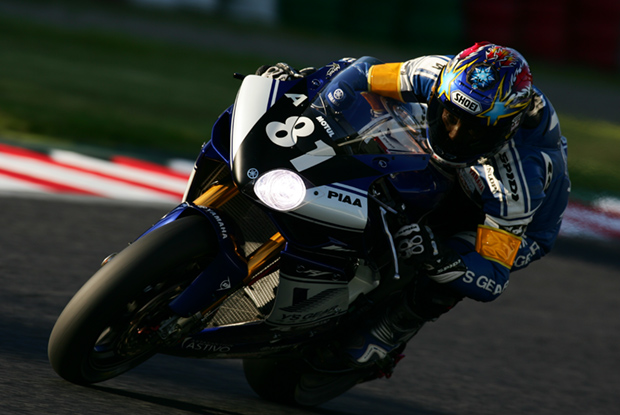
Category/Ranking/Result
| WSBK | Noriyuki Haga: 2nd | Troy Corser: 5th | Shinichi Nakatomi: 15th |
|---|---|
| EWC | Yamaha Austria Racing Team 7: 3rd | Endurance Moto 38: 5th | Phase One Endurance: 6th | Yamaha GMT 94: 7th |
| Suzuka 8H | 81 YAMAHA RACING: 9th | Phase One Endurance: 15th | Yamaha Austria Racing Team 7: 36th |
| JSB1000 | Katsuyuki Nakasuga: 4th | Norifumi Abe: 8th | Nobuyuki Osaki: 10th |
| AMA SB | Eric Bostrom: 7th | Jason DiSalvo: 9th |
2008
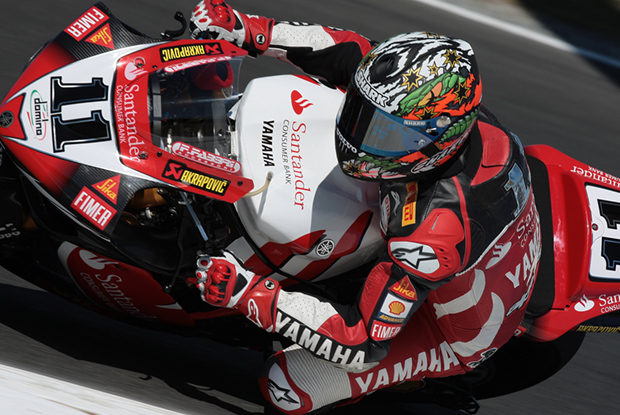
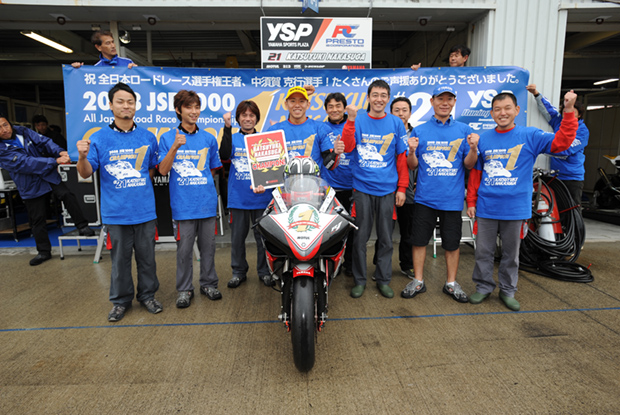
Category/Ranking/Result
| WSBK | Troy Corser: 2nd | Noriyuki Haga: 3rd | Shinichi Nakatomi: 19th |
|---|---|
| EWC | Yamaha Austria Racing Team 7: 2nd | Ymes Folch Endurance: 3rd | Phase One Endurance: 8th | BK Maco Moto Racing: 10th | YAMAHA GMT94: 21st |
| Suzuka 8H | 218 YAMAHA RACING: 5th | Yamaha Austria Racing Team 7: 11th | Ymes Folch Endurance: 12th | Phase One Endurance: 13th |
| JSB1000 | Katsuyuki Nakasuga: Champion | Nobuyuki Osaki: 2nd | Ryuji Yokoe: 9th | Yuji Sato: 11th |
| AMA SB | Eric Bostrom: 3rd | Jason DiSalvo: 4th |
2009
6th-Generation: M1-Derived Crossplane Crankshaft
The 2009 R1 featured a crossplane crankshaft based on technology developed on the YZR-M1 MotoGP machine, delivering incredibly linear traction and control in response to throttle operation. Together with the newly dimensioned aluminium Deltabox frame, the R1 boasted outstanding cornering performance. This model also featured the first twin fuel injectors for an R1, Yamaha’s exclusive CF die-cast magnesium subframe, independent damping mechanisms for the front fork and more.
Max. power: 182 PS/12,500 rpm Vehicle weight: 206 kg
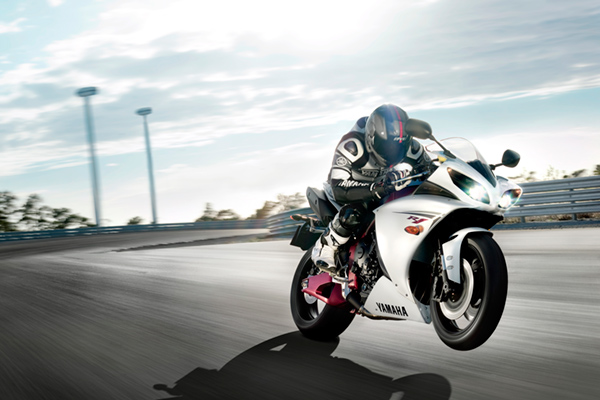
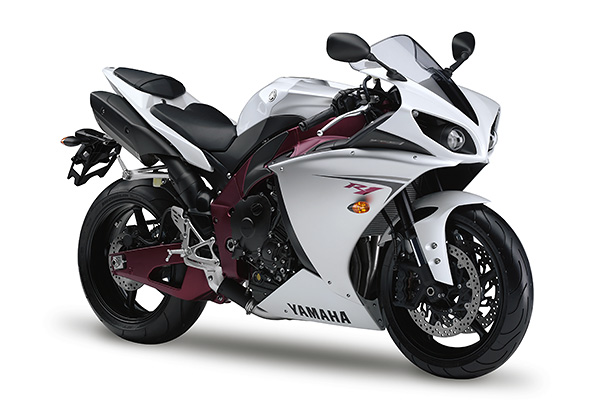
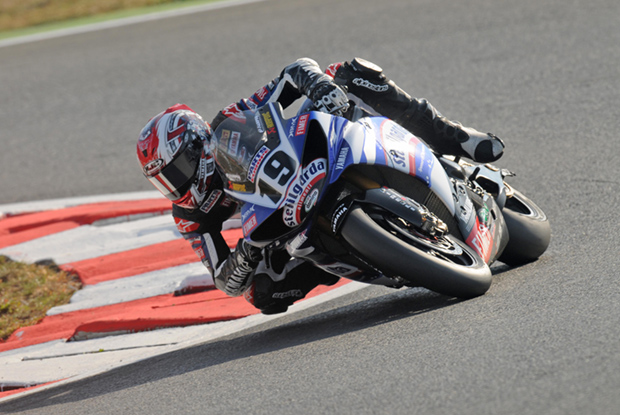
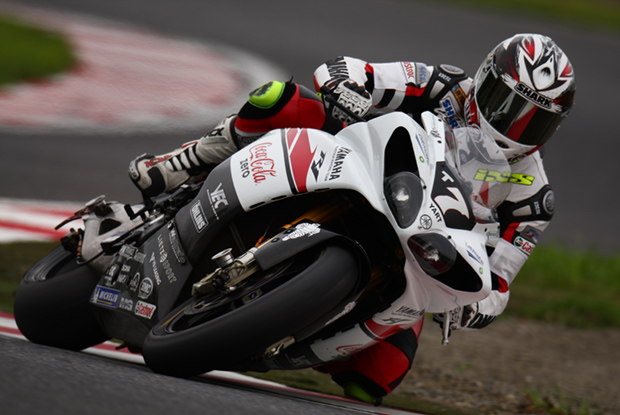
Category/Ranking/Result
| WSBK | Ben Spies: Champion | Tom Sykes: 9th |
|---|---|
| EWC | Yamaha Austria Racing Team 7: Champion | Phase One Endurance: 8th | Amadeus X-One: 9th |
| Suzuka 8H | Yamaha Austria Racing Team 7: 4th | Phase One Endurance: 12th | Ymes Folch Endurance: 12th | Phase One Endurance: 13th |
| JSB1000 | Katsuyuki Nakasuga: Champion | Nobuyuki Osaki: 5th | Ryuji Yokoe: 12th |
| AMA SB | Josh Hayes: 2nd | Ben Bostrom: 5th |
2010
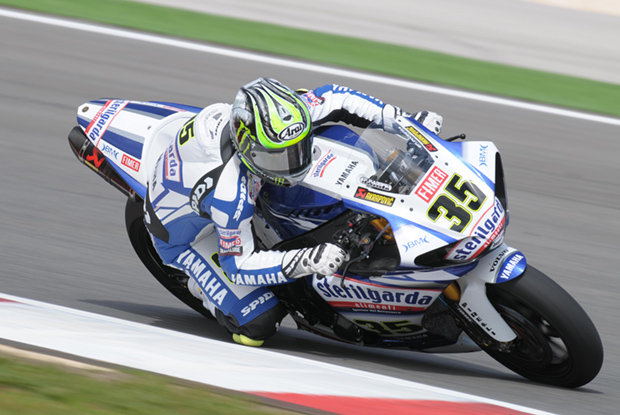
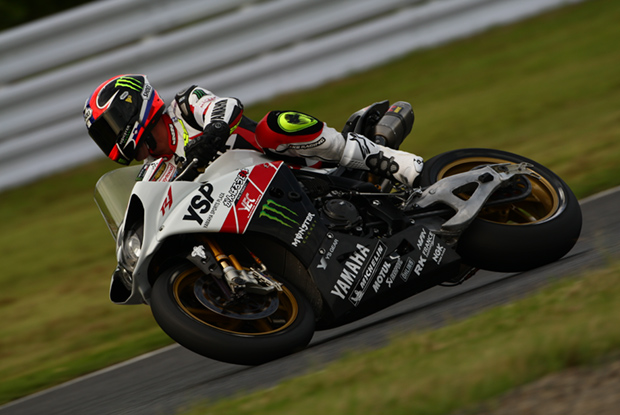
Category/Ranking/Result
| WSBK | Cal Crutchlow: 5th | James Toseland: 9th |
|---|---|
| EWC | Yamaha Austria R.T.: 3rd | Ymes Folch Endurance: 7th | Yamaha France GMT 94 Ipone: 9th |
| Suzuka 8H | Team Frontier Cleverwolf Racing: 14th | Yamaha Austria R.T.: 16th |
| JSB1000 | Katsuyuki Nakasuga: 4th | Yuichi Takeda: 8th |
| AMA SB | Josh Hayes: Champion | Ben Bostrom: 5th |
2011
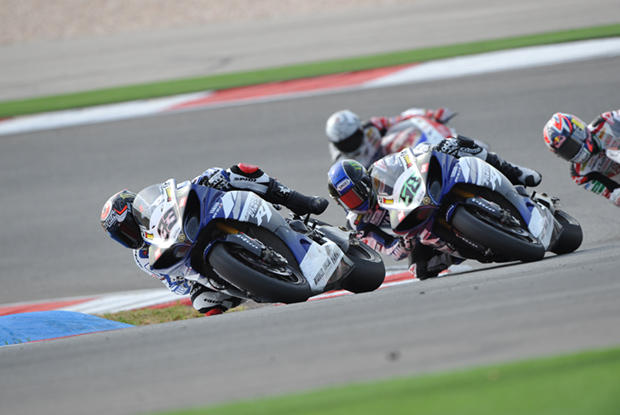
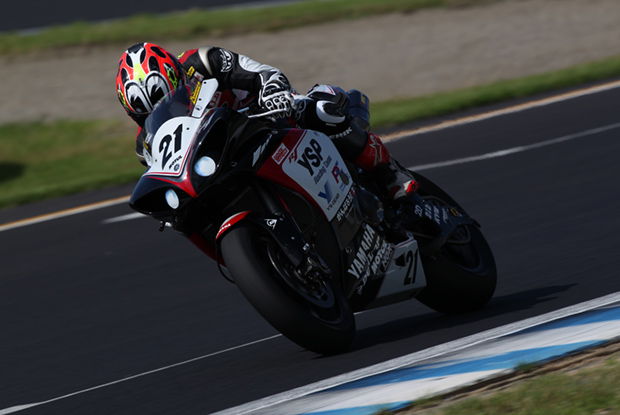
Category/Ranking/Result
| WSBK | Marco Melandri: 2nd | Eugene Laverty: 4th |
|---|---|
| EWC | Yamaha France GMT 94 Ipone: 3rd | Monster Energy Yamaha – YART: 5th | Ymes Folch Endurance: 7th | MACO RACING Team: 9th |
| Suzuka 8H | YAMAHA RACING FRANCE GMT94 IPONE: 7th |
| JSB1000 | Katsuyuki Nakasuga: 5th |
| AMA SB | Josh Hayes: Champion | Ben Bostrom: 5th |
2012
7th-Generation: Equipped with Traction Control
The R1 was updated with a traction control system for the crossplane engine. Based on the speed differences between the front and rear wheels, the ECU detects when the rear wheel is spinning and adjusts the ignition timing, fuel delivery and throttle opening (YCC-T) simultaneously to help maintain traction. In addition, new settings for the ECU and fuel injection system improved both drivability and fuel consumption, and exterior design refinements were made to further highlight the evolution of Yamaha’s flagship supersport model.
Max. power: 180 PS/ 12/500 rpm Vehicle weight: 206 kg
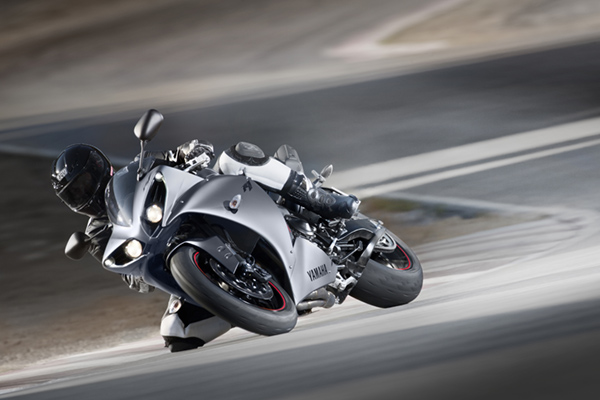
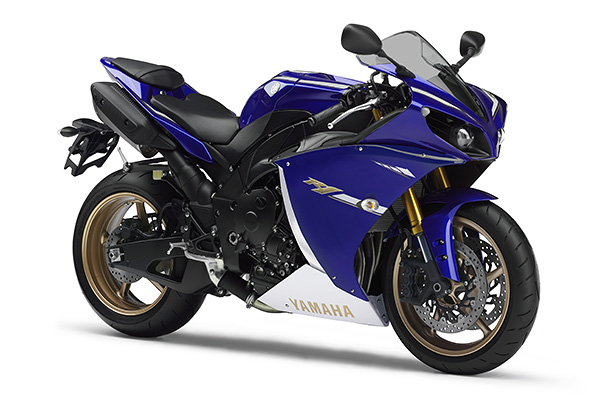

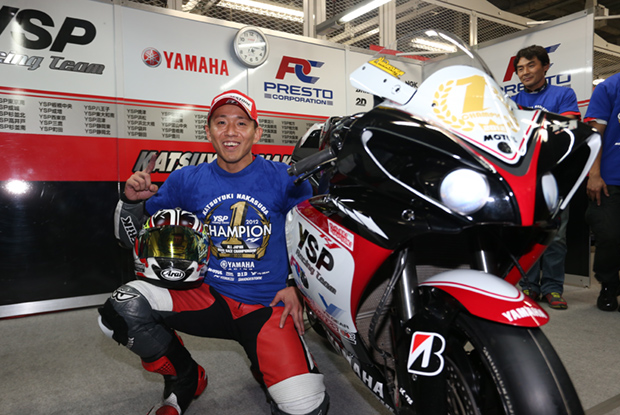
Category/Ranking/Result
| EWC | Yamaha – GMT 94 – Michelin – Yamalube: 3rd | Monster Energy Yamaha – YART: 6th |Yamalube Folch Endurance: 8th |
|---|---|
| Suzuka 8H | YAMAHA FRANCE GMT94 MICHELIN YAMALUBE: 3rd |
| JSB1000 | Katsuyuki Nakasuga: Champion | Takuya Fujita: 9th |
| AMA SB | Josh Hayes: Champion | Josh Herrin: 4th |
2013
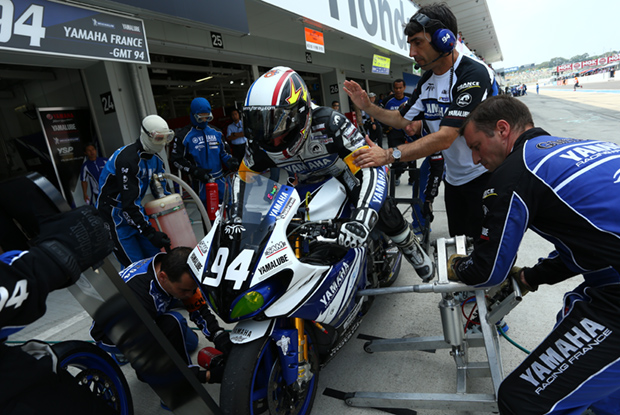

Category/Ranking/Result
| EWC | GMT94 YAMAHA: 2nd | Monster Energy Yamaha – YART: 5th | MACO RACING Team: 7th |
|---|---|
| Suzuka 8H | YAMAHA FRANCE GMT94 MICHELIN YAMALUBE: 5th | MONSTER ENERGY YAMAHA -YART: 8th |
| JSB1000 | Katsuyuki Nakasuga: Champion | Takuya Fujita: 11th |
| AMA SB | Josh Herrin: Champion | Josh Hayes: 2nd |
2014
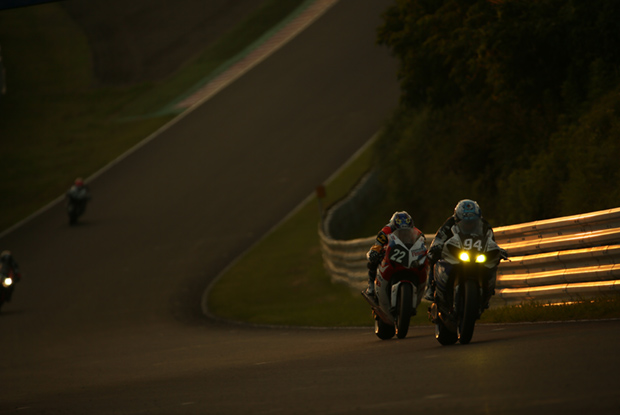
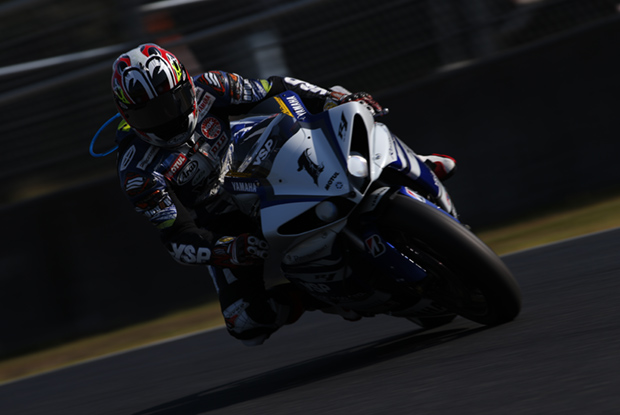
Category/Ranking/Result
| EWC | GMT94 YAMAHA: Champion | Monster Energy Yamaha – YART: 6th |
|---|---|
| Suzuka 8H | MONSTER ENERGY YAMAHA with YSP: 4th | YAMAHA RACING GMT94 MICHELIN: 9th | MONSTER ENERGY YAMAHA -YART: 10th |
| JSB1000 | Katsuyuki Nakasuga: Champion | Kohta Nozane: 8th | Takuya Fujita: 9th | Shinichi Nakatomi: 10th |
| AMA SB | Josh Hayes: Champion | Cameron Beaubier: 3rd |
2015
8th-Generation: “No Excuses.”
Shifting from the R1’s long-held Fastest on Twisty Roads positioning, the 8th-generation R1 was developed to be to the Fastest on the Racetrack, a production superbike that users could experience the technological ideals behind the YZR-M1 MotoGP bike. In addition to its powerful engine, this R1 was the first production motorcycle with a 6-axis Inertial Measurement Unit and other cutting-edge electronics to achieve a new level of handling performance. The high-end YZF-R1M boasts electronically controlled suspension, a lightweight carbon-fibre cowl and onboard data logger recording a wealth of information useful for racing or trackday enthusiasts.
Max. power: 200 PS/13,500 rpm Vehicle weight: 199 kg
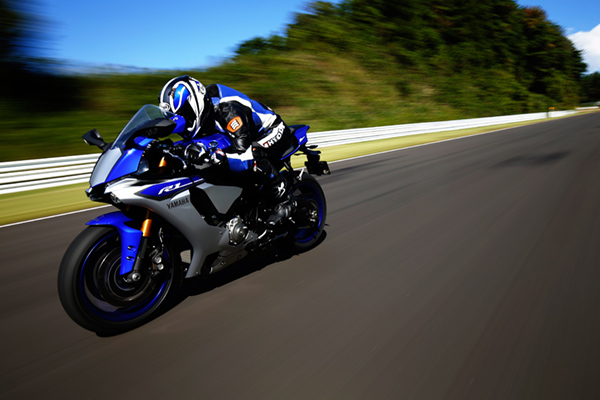
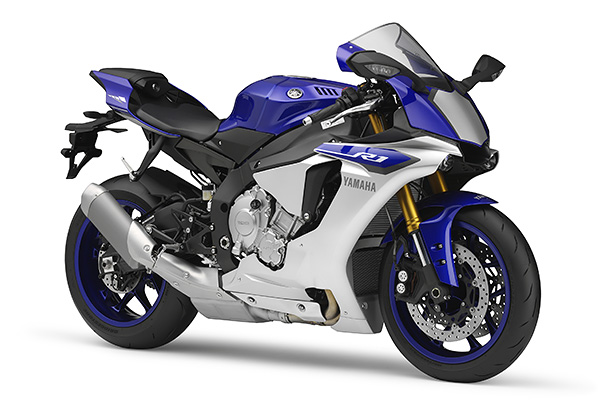
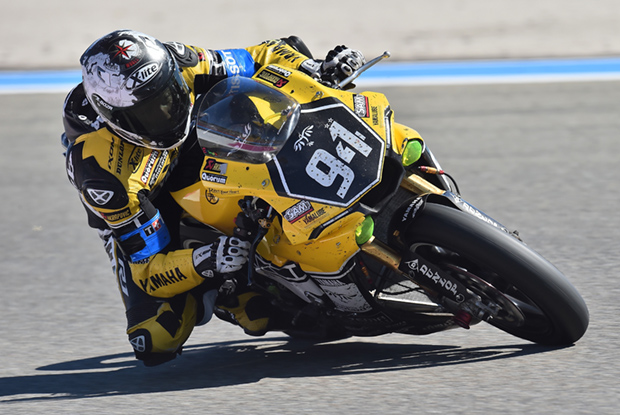
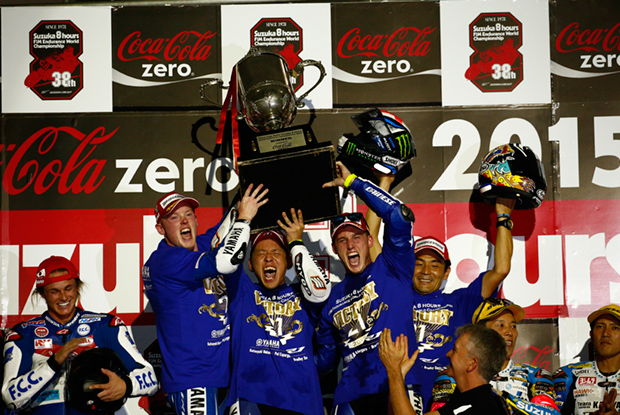
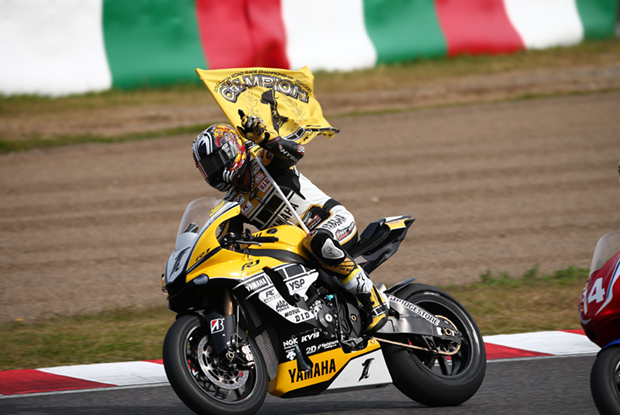
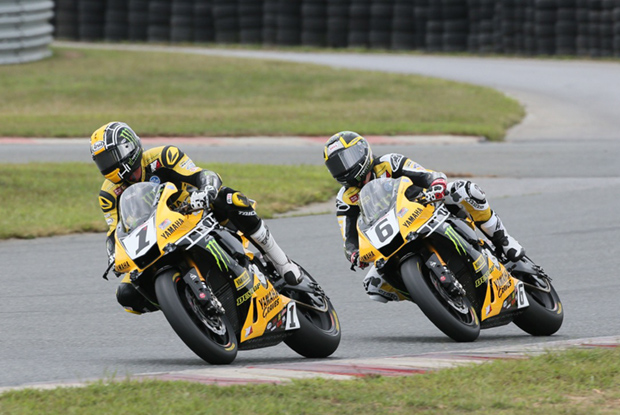
Category/Ranking/Result
| EWC | GMT94 YAMAHA: 2nd | Monster Energy Yamaha – YART: 10th |
|---|---|
| Suzuka 8H | Yamaha Factory Racing Team: Winner | GMT94 YAMAHA: 6th |
| JSB1000 | Katsuyuki Nakasuga: Champion | Kohta Nozane: 7th | Shinichi Nakatomi: 9th | Yuki Ito: 16th | Takuya Fujita: 18th |
| MotoAmerica | Cameron Beaubier: Champion | Josh Hayes: 2nd |
2016
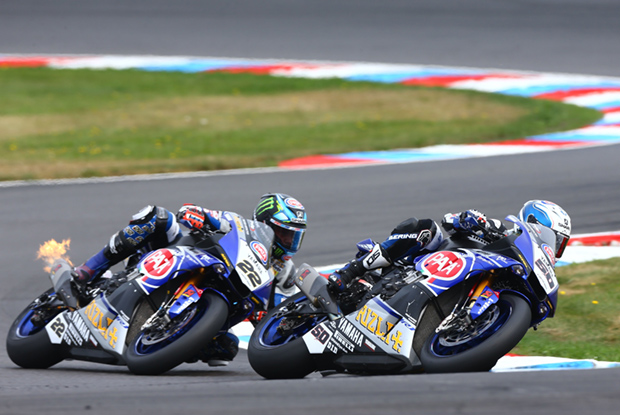
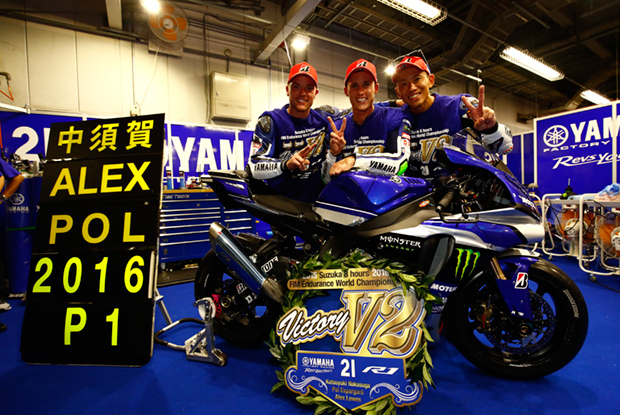
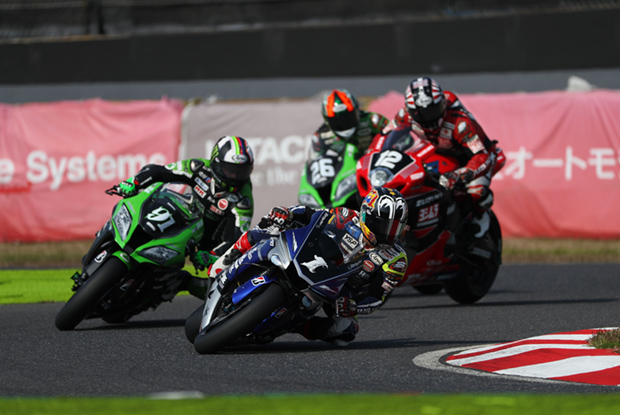
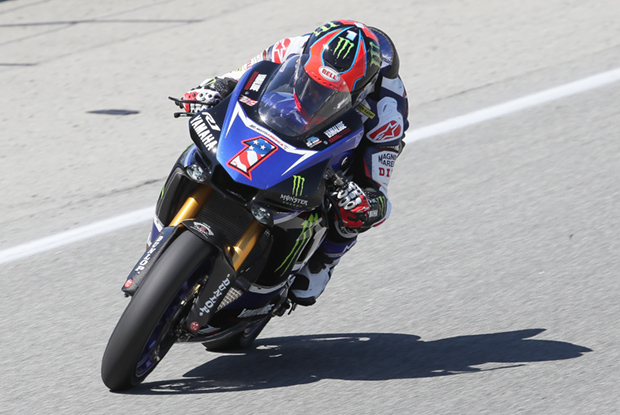
Category/Ranking/Result
| WSBK | Sylvain Guintoli: 11th | Alex Lowes: 12th |
|---|---|
| EWC | GMT94 YAMAHA: 2nd | YART Yamaha Official EWC Team: 6th | TEAM 3ART YAM'AVENUE: 8th |
| Suzuka 8H | Yamaha Factory Racing Team: Winner | YART Yamaha Official EWC Team: 4th | GMT94 Yamaha Official EWC Team: 14th |
| JSB1000 | Katsuyuki Nakasuga: Champion | Kohta Nozane: 5th | Takuya Fujita: 9th | Shinichi Nakatomi: 13th |
| MotoAmerica | Cameron Beaubier: Champion | Josh Hayes: 2nd |
2017
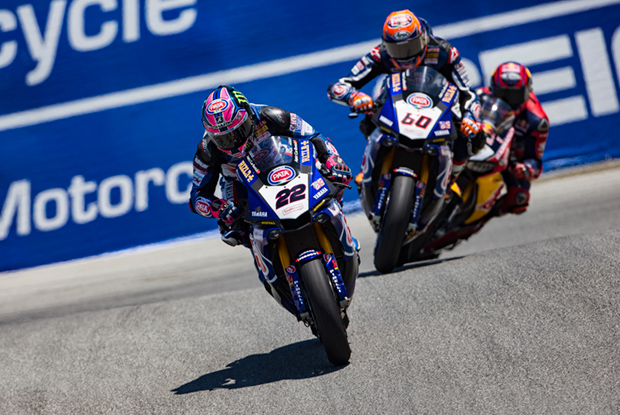

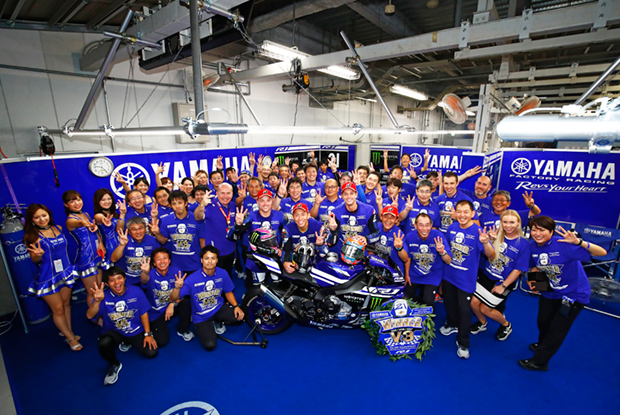

Category/Ranking/Result
| WSBK | Alex Lowes: 5th | Michael van der Mark: 6th |
|---|---|
| EWC | GMT94 YAMAHA: Champion | YART – YAMAHA: 3rd | MACO RACING Team: 6th | Yamaha Viltaïs Experiences: 7th | MOTO AIN CRT: 8th |
| Suzuka 8H | Yamaha Factory Racing Team: Winner | YART Yamaha Official EWC Team: 5th | GMT94 Yamaha Official EWC Team: 11th |
| JSB1000 | Takuya Fujita: 4th | Kohta Nozane: 5th | Katsuyuki Nakasuga: 6th | Shinichi Nakatomi: 10th | Yuuya Kondo: 12th |
| MotoAmerica | Cameron Beaubier: 3rd | Josh Hayes: 4th |
Episode 1
2003 – YZF-R1 Takes the Suzuka 8 Hours JSB1000 Class Win
The 1,000cc YZF-R1 supersport model debuted in 1997 at the Milan Motorcycle Show (also commonly known as EICMA). Featuring a dry weight rivalling that of 600cc machines at 177 kg and a powerful 150 PS 4-cylinder engine, the R1 took the motorcycle world by storm as a fun-to-ride litre bike made for carving corners. Benefitting from subsequent upgrades and revisions, the R1 became a leader in the large-displacement supersport segment and other manufacturers soon followed.
With superbike racing rules still only allowing 750cc fours, 900cc triples and 1,000cc twins to compete, it was only a matter of time until steps would be taken to incorporate 1,000cc 4-cylinder machines into production motorcycle racing.
With Honda, Suzuki, Kawasaki and Yamaha all in Japan, it was the first country to get the ball rolling. Beginning in 1999, the S-NK (“Super Naked”) class was established and run together with the existing 750cc Superbike class in the All Japan Road Race Championship. The S-NK class allowed for machines displacing 1,000cc or more and its X-Formula sub-class permitted a wide range of modifications. Privateer teams quickly entered this class on the R1 and it steadily established a strong presence, with long-time Yamaha-affiliated rider Katsunori Hasegawa finishing 6th in the championship in ’99 and 4th in 2000.
By 2002, 1,000cc 4-cylinder bikes were becoming ever more popular, so the JSB1000 class was created in response, with modifications strictly limited to make it easier for privateers to contest the series. In 2003, JSB1000 was designated as the premier class of the All Japan Championship and Yamaha’s top team switched from the 750cc YZF-R7 to the 3rd-generation YZF-R1 with new recruit Shinichi Nakatomi at the controls. Despite the strong teams from other manufacturers filling the grid, Nakatomi finished his rookie season in the class with an impressive 6th.
That year Yamaha assembled a star duo for the 2003 Suzuka 8 Hours with Nakatomi and two-time All Japan Superbike Champion Wataru Yoshikawa (’94, ‘99) riding a JSB1000-spec R1. Back then, the track was swarming with machines across five classes with different rules for displacement and modifications, but the pair fought through it all to take 1st in the JSB1000 class and finish an impressive 2nd overall.
Episode 2
2004 – Yamaha’s First Endurance World Championship Title
In 2004, the 4th-generation YZF-R1 mounted a new engine with a closed-deck cylinder design in an all-new Deltabox V (Victory) frame and demonstrated its performance in numerous racing categories and events.
In the All Japan Road Race Championship, Shinichi Nakatomi began his second year in the JSB1000 class with the R1 and Yamaha's top team. Though he was forced to retire at the season opener in Suzuka, he took a brilliant first victory at Round 3 at Tsukuba and finished the season 3rd in the standings. In Europe's Superstock 1000 Cup (known as the European Superstock 1000 Championship today), there was a show of domination by the R1 with Lorenzo Alfonsi winning the title and the riders occupying 2nd through 4th in the standings also all on R1s. The trend continued across the Atlantic in the United States, where Aaron Gobert became the 2004 AMA Superstock Champion with Yamaha's flagship litre bike.
But that wasn't all. On the world stage, the Yamaha GMT94 endurance racing team based in France put on a dazzling performance. As the name implies, the team began racing in 1994, and in 2002 they finished 3rd in the Endurance World Championship (EWC). Then in 2003, when 1,000cc 4-cylinder machines were allowed to compete in the series, they immediately entered with the R1 and won the Oschersleben 24 Hours in Germany.
The following year, GMT94 put David Checa, William Costes and Sébastien Gimbert on the new 4th-generation R1 and they won the second race of the series, the Zhuhai 6 Hours. The team arrived at the mid-summer Suzuka 8 Hours leading the points standings. The race saw early crashes left and right, but GMT94 finished as the leading Yamaha team with a solid 8th overall and 3rd in their class, securing valuable championship points. The French squad celebrated their second overall victory at Round 5, the Oschersleben 24 Hours in Germany, and pulled so far ahead of rival teams in the points that they clinched their first EWC title—and the first ever for Yamaha—before the final round.
Also racing the R1 in the series were the Yamaha Endurance Moto 38 team and Yamaha Austria Racing Team 7. They finished 3rd and 4th, respectively, and contributed to Yamaha also winning the Manufacturer title that year. This season made it clear that the R1 would be a force to be reckoned with in the future.
Episode 3
2008 – A Legend Begins: Nakasuga Wins the R1’s First JSB1000 Title
From 2003, as more 1,000cc 4-cylinder machines were being entered in races around the world, each redesign of the YZF-R1 saw its positioning move more toward developing performance for race-winning potential. For 2007 the R1 featured a new engine equipped with Yamaha’s exclusive YCC-T ride-by-wire throttle and electronically controlled variable air intake funnels (YCC-I), a new frame and other upgrades that dramatically enhanced its performance.
It was Katsuyuki Nakasuga from Fukuoka Prefecture that capitalised on the bike’s competitiveness in the All Japan Road Race Championship. He’d built up his career with several seasons in the 250cc class and stepped up to the premier JSB1000 class in 2005. When Shinichi Nakatomi switched to competing in the World Superbike Championship in 2006, Nakasuga joined Yamaha’s top team to replace him. Although Nakasuga ended his debut season in the class only 9th in the standings, he was armed with the new 2007 R1 the following year and celebrated his first win at Round 4, his home race at the Autopolis in Kyushu. It didn’t take long for him to do it again, taking the win at Round 6 in Okayama, and by season’s end he’d jumped up to 4th in the standings.
Come 2008, Nakasuga and the R1 were in perfect sync; he won the first two races and finished on the podium with 2nd at Round 3. Heavy rain at Sportland SUGO led to him falling and retiring from Round 4, but in the remaining double-headers at Suzuka and Okayama, he finished on the podium in three of the four races to clinch his first JSB1000 championship.
The most dramatic part of his title bid unfolded at the second and final race of the season in Okayama. With the rain pouring down, Nakasuga finished 3rd in the first race to hold on to his points lead as planned so that he would only need to finish 12th or higher in the second race to take the championship.
But the margin he secured worked against him instead: “I thought I had it in the bag and the instant my focus faded mid-race, I went down. I thought it was all over.” He quickly got up and checked the bike. “I saw that only the right footpeg was broken, so the bike was still ridable. I told myself that I had to complete the remaining seven laps no matter what.” He got the R1 going again and still finished a commendable 6th to be crowned All Japan JSB1000 Champion for the first time.
This was how the legend of Katsuyuki Nakasuga began — Japan’s Master of the R1.
Episode 4
2009 – The Crossplane R1 Rules the World
The YZF-R1 had proved its potent potential as a racing platform over the years with a title in the Endurance World Championship (EWC) and the premier JSB1000 class of the All Japan Road Race Championship. However, the World Superbike Championship (WorldSBK)—the pinnacle of production motorcycle racing—demands even more exhaustive machine development and solid teamwork to battle through each race of the season. Nevertheless, the R1 showed progress and stellar performances on this battlefield as well.
In 2005, the 50th anniversary of Yamaha Motor, teams supported by Yamaha’s French and Italian subsidiaries contested the WorldSBK championship with former 500cc/MotoGP stars Norifumi “Norick” Abe, “Nitro” Noriyuki Haga, Sébastien Gimbert and Andrew Pitt. Haga, who had finished as high as 2nd in the championship on the YZF-R7 during the 750cc era, had only modest results in the first half of the season. But after winning the second race at Round 7 in Brno, he rode brilliantly to secure consecutive podiums and finished 3rd in the championship.
Haga rode to 3rd again in 2006 and rose to 2nd in the rankings in 2007, and with his teammate Troy Corser finishing 5th that year, Yamaha won its first Manufacturer’s title in World Superbikes. In 2008, the Yamaha pair were even stronger, with Corser finishing an impressive 2nd and Haga in 3rd, but they were unable to ensure a second consecutive Manufacturer’s title for Yamaha.
For 2009, Yamaha completely restructured its World Superbike team, aiming for a performance breakthrough. They selected young American sensation Ben Spies, who’d won three consecutive AMA Superbike titles (’06, ’07, ‘08), and British Superbike frontrunner Tom Sykes as riders. The two were armed with the newly launched 6th-generation R1 that featured a crossplane crankshaft designed with feedback from the title-winning YZR-M1 MotoGP machine
The results were apparent right from the opening round at Phillip Island. Though Spies fell in Race 1 and remounted to finish just 16th, he took a stunning first World Superbike win in Race 2. Despite being a rookie, Spies proved it was no fluke and made it three wins in a row by taking a double-win at Round 2 in Qatar. The Texas native went on to score several more victories and podiums—with just a few DNFs—to steadily build up his points lead as he and the now-Ducati-mounted Haga battled for the title. Arriving at the final round of the season in Portugal ten points behind and the pressure at maximum, Spies won Race 1 while Haga fell and no-pointed. He then finished a safe 5th in Race 2 to clinch the title in his rookie season, giving Yamaha its first-ever WorldSBK championship win in the crossplane R1’s debut year in the class.
Episode 5
2010-2016 – The Seven Years of Domination with Hayes, Herrin and Beaubier
Production motorcycle racing, especially series featuring 750cc to over-1,000cc machines, was spearheaded by the United States with the Daytona 200 in 1937. Under the auspices of the American Motorcyclist Association (AMA), road racing in America with commercially available models underwent its own unique evolution that continues to this day.
In 2009, management of America’s domestic road racing championship changed and the regulations were altered to try and stimulate the sport. In response, Yamaha Motor Corporation, U.S.A. strengthened its team structure. Josh Hayes and Ben Bostrom rode the 6th-generation crossplane YZF-R1 in its debut year to several wins and podiums, finishing 2nd and 5th that year, respectively, in the AMA Superbike Championship.
Spurred on by his success in his first year with Yamaha, Hayes went on to win 7 of the 19 races in 2010 to claim his first AMA Superbike title, a feat he repeated the following year. In 2012 Hayes was nearly unbeatable, taking a record-breaking ten consecutive victories during the middle of the season and standing on the top step in 16 of the 20 races run for a massive 580 series points. The Mississippian took his third straight title on the R1 in a dominating display of strength and speed.
However, the following year it was Hayes’ young teammate Josh Herrin who took Yamaha’s fourth AMA Superbike title in a row. The two riders battled it out on their R1s throughout the season, winning 12 of the 14 races between them. And while it was Herrin who clinched the 2013 title in the end, Hayes still took eight wins and once again demonstrated his prowess on the R1. With 2013 AMA Sportbike Champion and Daytona 200 winner Cameron Beaubier as his new teammate in 2014, Hayes won seven races to take the AMA title once again, his fourth in five seasons.
In 2015, road racing in America underwent another major change and was reborn as the MotoAmerica AMA/FIM North America Championship with three-time 500cc World Champion Wayne Rainey at the helm. For this inaugural season, the Yamaha team was running the completely redesigned 8th-generation R1 and its cutting-edge electronics package. It was the most dominant machine on the grid and Hayes and Beaubier won all eighteen races between them in a complete Yamaha season shutout—a stunning display of the new bike’s performance.
Hayes won ten races to Beaubier’s eight, but the young Californian was off the podium just once the entire season. His consistency bested Hayes to the title by four points and he became the first MotoAmerica Superbike Champion. The next year, Beaubier held off another determined challenge by Hayes to clinch back-to-back titles and record Yamaha’s seventh consecutive championship with the R1 in America’s premier class.
Episode 6
2015 – The All-New R1’s Debut Year Blitz
In 2015, Yamaha Motor celebrated its 60th anniversary and released a full redesign of its flagship superbike unlike any before. To make the 8th-generation YZF-R1 the fastest bike on the racetrack, this latest iteration features uncompromising performance, an advanced electronics package and numerous other technologies developed on the YZR-M1 MotoGP machine. The result was the new R1 immediately running at the front and winning races around the world.
Going for an unprecedented fourth consecutive All Japan JSB1000 Championship win, Katsuyuki Nakasuga rode the 2015 R1 to 2nd in the season opener, despite still searching for the best setup for the all-new racebike. However, at Round 2 at the Autopolis in Kyushu, he took pole and went on to post his first win of the season. Nakasuga then proceeded to stamp his authority on the series with his new steed. He dominated Round 3 at Motegi, steadily stretching his lead over 2nd by a second each lap to cruise home to win the 23-lap race by a whopping 14 seconds. Nakasuga repeated this feat at Round 4 at Sportsland SUGO, a 52-lap 120-mile endurance race, winning by more than 50 seconds. The blitz continued as he won the penultimate round by a gaping 20 seconds and then captured his fourth consecutive championship with a commanding double-win at Suzuka.
That same year, the newly-revived Yamaha Factory Racing Team took on the Suzuka 8 Hour with the new R1, fielding a formidable squad of Nakasuga and Yamaha MotoGP riders Pol Espargaró and Bradley Smith. Espargaró exhibited the bike’s incredible performance by securing pole position with a record-setting 2’06.000 lap time in the Top 10 Trial qualifiers. At the race start, Nakasuga struggled to fire up the bike in an uncharacteristic mistake that dropped the team down several places, but the factory Yamaha team knew their three riders had the best average pace on the grid. They kept calm and carried out their race strategy to ride conservatively and save fuel. Steadily, they fought their way through the field and retook the lead. Overcoming the disarray caused by the safety car entering the track multiple times, the team maintained a comfortable 1’17” lead and claimed Yamaha’s fifth win in the prestigious event, the first in 19 years.
On the other side of the Pacific, Josh Hayes—a legend with the R1 on American soil—and his young teammate Cameron Beaubier were contesting the inaugural season of the new MotoAmerica Superbike Championship. Hayes and Beaubier won all 18 races of the season’s nine rounds, with Hayes winning ten races and Beaubier eight. However, Beaubier’s consistency with 17 podiums beat Hayes to the title by just four points and he was crowned the first MotoAmerica Superbike Champion. It was a similar story in the Superstock 1000 class run together with the premier Superbike class. Four riders on the new R1 dominated the season by also winning all 18 races, with Jake Gagne taking the title with 13 victories.
Over in Europe in the British Superbike Championship (BSB), Australian racer Josh Brookes quickly meshed with the new Yamaha superbike. Finishing off the podium only once in the first five rounds, he then won every race at Rounds 6 through 8 at Brands Hatch, Thruxton and Cadwell Park. As a Title Fighter for The Showdown—the final part of the season that decides the champion—Brooks won six races in a row to claim his first BSB title.
The 8th-generation R1 had ended its debut season with an impressive list of triumphs and titles.
Episode 7
2012-2016 – Record Breakers: Nakasuga and the R1 Go Five for Five
Katsuyuki Nakasuga won his and the YZF-R1’s first JSB1000 title back in 2008. The following year, he switched to the 6th-generation R1, with its new YZR-M1-derived crossplane crankshaft delivering incredibly linear torque characteristics. Getting used to the bike’s new engine and power delivery cost him points in the first few rounds of the season, but once he took his first win at Sugo, he then consistently built up points in the second half to take the title challenge down to the final two-race round in Suzuka.
Nakasuga won the first race in the dry but was still down by four points. In the pivotal second race with the rain now coming down and the pressure at maximum, the Kyushu-born rider finished on the podium in 2nd while his main title rival fell. It was a dramatic comeback to take his second consecutive title. He then set his sights on a feat achieved only by Yamaha legends Tadahiko Taira and Norihiko Fujiwara: three straight All Japan premier class titles.
However, “where there is light, there is shadow”.
Nakasuga went into the doubleheader at the final round in Suzuka in 2010 leading in the points, but a fall in a wet Race 1 ended his dream of equalling Taira and Fujiwara that year. Then in 2011, despite a pair of wins and multiple podiums, Nakasuga finished a disappointing 5th. But in 2012, he launched his campaign with a win at the opening round at Twin Ring Motegi. He then won or finished in 2nd every round after and built up a 28-point lead going into the final round—once again in the rain—at Suzuka. The nightmare seemed set to repeat itself as Nakasuga fell in Race 1 again, reducing his lead to a slim seven points. Determined to take the title at all costs, he abandoned pushing for the win and rode conservatively to finish a solid 3rd in Race 2, taking enough points to win back the JSB1000 title. “I just focused everything on getting the title back,” he said afterwards with relief.
In 2013, Nakasuga held on to his title by just a single point in another come-from-behind victory by doing the double at the final round at Suzuka. He got his second chance for a third straight title in 2014. At a rainy Suzuka season finale once again, Nakasuga approached the race weekend strategically, winning the first race and taking 2nd in the second to finally achieve his goal of joining Taira and Fujiwara with three titles in row. “I’m the third Yamaha rider to win three in a row, but nobody’s ever won five All Japan titles before, so I guess I’m a legend now!” he laughed.
However, there was more glory to come for Nakasuga. In 2015, Yamaha revived its All Japan factory team and with greater support not only to coincide with the company’s 60th anniversary, but also to showcase the all-new 8th-generation R1 and its MotoGP-derived electronics. Despite still searching for the ideal setup for the new racebike, Nakasuga took a strong 2nd at the season opener. Then he went on a tear, setting pole and winning every race at the remaining seven rounds to claim the championship crown by 54 points in a dominating display of performance by rider and machine.
As the R1’s development continued and Nakasuga’s mastery of it grew, they proved to be an unbeatable combination, a fact revealed in the final timesheets. Nakasuga was typically crossing the finish line on the R1 a whopping 10 to 20 seconds ahead of his pursuers. This momentum didn’t end with the 2015 season either, and he went on to rule the 2016 championship in similar fashion. Winning the first four races that season added to his tally from last year: a stunning 11 wins from pole. This record run came to an end when he finished 3rd in the second race in a downpour at the Okayama International Circuit, but he then went on to win the final doubleheader, sealing the seventh JSB1000 title of his career and making it an unprecedented five in a row—all on the YZF-R1.
Episode 8
2017 – Three for Three at Suzuka and Four EWC Titles: The YZF-R1 in Endurance
The YZF-R1’s first honours in endurance racing were won at the 2003 Suzuka 8 Hours when it came 1st in the JSB1000 class and finished the race 2nd overall. And just a year later, the French Yamaha GMT94 team won the Endurance World Championship (EWC) for the first time with victories at the Zhuhai 6 Hours and the 24 Hours of Oschersleben.
Thereafter, Yamaha’s endurance racing efforts focused primarily on supporting GMT94, the Yamaha Austria Racing Team (YART) and other Yamaha teams competing in the EWC full-time. But in 2009 when the 6th-generation R1 debuted with its crossplane crankshaft, YART meshed with it immediately, winning the 24 Hours of Le Mans, the 8 Hours of Oschersleben, the 8 Hours of Albacete and the 8 Hours of Doha to take their first EWC title. Not to be outdone, GMT94 captured their second EWC title with the crossplane R1 in 2014.
And then in 2015, with the impetus of Yamaha’s 60th anniversary, the company completely revised its motorsports strategy and announced that it would contest the Suzuka 8 Hours with a full factory team for the first time in over a decade. While the race is technically a round on the EWC calendar, it holds tremendous importance in Japan and is the country’s biggest two-wheeled motorsports event. Armed with the all-new 8th-generation R1 with its advanced electronics package and fielding a formidable line-up of multi-time All Japan champion Katsuyuki Nakasuga and riders from MotoGP and WorldSBK, Yamaha’s efforts were well rewarded and the factory team won the event in 2015 and 2016.
At last year’s Suzuka 8 Hours, Nakasuga teamed up with World Superbike stars Alex Lowes and Michael van der Mark on the factory team to go for a third straight win. EWC frontrunners GMT94 on the other hand had arrived at Suzuka sitting 2nd in the standings. Only a single point separated them from 1st thanks to the French squad winning the 24 Hours of Le Mans, the 8 Hours of Oschersleben and the 8 Hours of Slovakia Ring in succession. YART had recruited young Japanese talent Kohta Nozane for the season, and their run of consistent podium results saw them 4th in the standings as they rolled into Suzuka for the final round.
After qualifying on pole in the Top 10 Trial shootout, the Yamaha factory bike fell slightly behind at the start but steadily charged through the field to eventually take the lead. With each rider change, the R1 moved further up the field away from the chasing pack, and was soon running alone at the front. After completing 216 laps, the Yamaha Factory Racing Team took the checkers for an incredible third consecutive win.
In addition, GMT94 achieved their own crowning glory. After being assessed a 30-second stop-and-go penalty mid-race, they pushed hard to recover and finished in 11th. This earned the team 15 points, which was enough to capture their third EWC title. After starting from 6th on the grid, YART overcame a late-race mechanical issue to finish an impressive 5th, ending the season one position higher in the standings with 3rd and joined GMT94 on the year-end podium.
In short, the R1’s long years and many successes in EWC have built its firm reputation today as an endurance race and title-winning machine.


